The People’s Plan for Economic Inclusion







For decades, San Bernardino has faced a set of related challenges that have restricted economic opportunity and pathways for its residents. A key city in the growing Inland Region, San Bernardino faces extremely high levels of poverty, unemployment and related problems including health and housing insecurity. These challenges expand to include the lack of civic engagement and accountability in the leadership of the City.
These crises are rooted in a failure of civic leadership to address these problems comprehensively with a mind to community-based solutions. In response to this situation, the Just San Bernardino (Just SB) Collaborative came together in 2020 to engage residents and community members to assess the sources and develop a plan that actively addresses the conditions that have led to San Bernardino’s consistently high rates of poverty, unemployment, underemployment, low wages, eviction and other key indicators of economic health through a grassroots lens.
The People’s Plan for Economic Inclusion is intended to be a roadmap for economic policies and projects to develop local, grassroots-based solutions focused on job creation that is sustainable and community-owned. We intend to create innovative models and strategies for economic growth in the City of San Bernardino; and offer participatory models for inclusive community engagement that put people first.
In order to assess the needs of the city, Just SB leaders spent 2021 conducting a large scale survey, focus group sessions, and interviews of community members to gather community needs. The data interpretation team individually reviewed all data responses submitted by all Just SB Collaborative organizations. These responses were categorized by major themes and sub-themes: Employment/Quality Jobs Housing, Education, Healthy Communities (Warehousing and Environmental Justice), and Entrepreneurship. Interview summaries were used as supplemental support for the focus group findings because not every organization used the same interview questions, making it harder for the analysis process and concluding findings.

Time and again, the City of San Bernardino has borne the worst impacts of economic recessions. Over the last decade, San Bernardino has been trying to recover from the 2008 recession and the resultant municipal bankruptcy of 2011 only to get hit, once again, with a global pandemic. Our city has seen unplanned economic development dominated by outside logistics and real estate interests, corruption, recalls of city officials, and systemic racism and rampant police violence that have kept San Bernardino unstable and under-resourced.
Currently, there exists an imbalance between the desires of the black and brown communities of San Bernardino County and the larger Inland Empire, and the institutional strategies designed to develop and benefit the city and larger region. Funds and investment continually flow between political, academic, and business leaders without community involvement and oversight. The language and dynamics of local institutional development and investment strategies repeat a similar narrative, shaped by a desire to increase profit and the number of jobs and opportunities, without an embodied understanding of what the human cost of these plans will be. The token goals of inclusion and equity have been addressed by including the leadership of recognizable organizations in the region, but the people and communities represented by these organizations who are directly impacted by these strategies and policies are not present. This lack of representation is deeply rooted in structural racism and exacerbates the poor economic conditions for the black and brown residents of San Bernardino County and the broader Inland Empire region.
With this issue in mind, in 2020, the Just San Bernardino Collaborative (Just SB), a group of nine community-based organizations, convened by the Inland Empire Community Foundation, began to ask how to truly address the human aspect within the concept of “human capital,” and how to make the people the center point of economic discussion and planning. With a mission to actively shape and advocate for an inclusive economic development model, Just SB is working to change the story and future of economic development in San Bernardino County and the larger Inland Empire region and to create more economic opportunity for San Bernardino working families by working together with residents in order to create a community-centered economy that truly benefits local residents.

We are San Bernardino
We are upset today and will be until something is done We have been ignored but we will not keep quiet
We are San Bernardino
We are courageous enough to keep pressing forward We are proud enough to know we deserve better And smart enough to realize we are stronger together

We the people did not create the conditions of shameful disadvantage that now permeate our chances of upward economic mobility. We did not cause the structures that allowed crime and chemical dependency to explode to crisis proportions within our community. We didn’t expect our elderly to be fearful to go outside on their own blocks and we are devastated to see young people hopeless about their futures and wanting to give up. It is not our fault that high-paying jobs have moved out of our area and unemployment is so high. Nor are we responsible for the exponential increase in the cost of home ownership here in California. But we are here now, we call this place home; our families, our jobs, our churches, and our schools are right here,our lives are right here. We are willing to fight the long battle to save this community, yet, we cannot do it alone. We need leadership to step up and listen to our voices.
We are San Bernardino
We have seen the corruption, we have experienced the abuse of power, we have suffered the hurt of lies and the loss of lives. We are tired but not defeated. We have not forgotten where we left our joy or that there is a place on the other side of our mounting sorrow. Our suffering has not made us weak, but more powerful, ‘cause we know dark nights do not last forever, they give birth to the brightest days. We love this place, this county, these cities, they are the roots that formed us, the hands that fashioned our brilliance. It is an inheritance we want to be excited about passing on to our children. So we are saddened by the conditions seen around us and are committed to radical solutions for change. We are open to ideas for improvement and are willing to work with those that want to see our community thrive again.
We are the people and we have a plan for revolutionary transformation
We want to be part of the steps towards healing our community and involved in the recovery process
We want more transparency on spending and support from our local officials
We want more of our students to have the opportunity to attend college and graduate
We want career development programs for those who choose not to attend college
We want corporations to operate under safe working conditions and not use us for cheap labor
We want healthcare benefits, competitive pay, and retirement plans for workers
We want our tax money to go back into improving our neighborhoods
We want affordable houses and attainable paths to home ownership
We want arts education and enrichment programs for our children
We want clean parks, cultural centers, and community gardens
We want more small business development and financial literacy classes
We want less warehouse traffic tearing up our streets
We want healthy air to breathe
We want safer communities
We want something different than what you have provided
We want change
We are San Bernardino
We will not stop requiring real investment in our future
We will not stop demanding a seat at the table
We will not stop insisting on a fair partnership for the people
We will overcome We will overcome We will overcome
The City of San Bernardino is the largest city in San Bernardino County, the largest county by geography in the nation. San Bernardino is also the San Bernardino County seat. As of the 2020 census, the city had a population of 222,101. It is a major city in the Inland Empire region of California, the 13th largest region in the nation, comprising San Bernardino and Riverside Counties with a population of 4,599,839.
The region has been populated by Tongva (or Serrano) people who for many generations were the stewards of the region’s natural resources at the base of the San Bernardino mountains.
Spanish settlers arrived in the early 1800s and the city was founded by Mormon settlers in the midst of mining and gold rushes. The California Southern (later Southern Pacific and then BNSF) railroad arrived in 1883, connecting the city to the rest of the country and west to Los Angeles. The city has experienced significant economic hardship starting with the decline of major manufacturing in the 1980s and accelerated with the closing of the Norton Air Force Base in 1994. The economic crash of 2008-9 impacted the region heavily, with the subprime housing crash resulting in major loss of jobs and people losing
their homes. The City filed for bankruptcy in 2012. San Bernardino’s economy has remained stagnant in the past decades, with an economic base rooted in the railroad, which moved much of its corporate staff out of the region in the 1970s, and the Air Force Base, which closed in 1994. Replacing this economic activity has been the development of a significant amount of warehousing and goods movement.
The City is one of the most diverse in California, 54% Hispanic or Latino, 9% Black and 27% white according to the 2020 census.
The City is also by many measures the poorest in California, with 34.6% of the population living in poverty, second only to Detroit nationwide. The Just SB Collaborative organized to focus on the lack of economic opportunity in the city and its neighboring communities, something that existing leadership and economic strategies have failed to address in recent years. The Just SB Collaborative aims to propose new, community-based strategies to address the economic stagnation San Bernardino faces.





Just SB represents a range of organizations at various capacities involved in economic mobility, grassroots organizing and power building, community development, and racial equity work in San Bernardino and the broader Inland Empire region. These organizations, with the help of local communities and residents, have been on the front lines of local movements for the development of education and criminal justice reform, restorative justice and policing practices, at-risk youth engagement, fighting the environmental and social impacts of the region’s logistics/warehouse industry, the development of low-income housing, the creation of job and entrepreneurship opportunities in the region, as well as working to increase accountability within public policy and leadership. These organizations also serve as critical resources for groups that have been excluded from the labor market such as the formerly incarcerated and people with limited work experience. These organizations have been an important part of the grassroots organizing within the San Bernardino community and have a track record of positive results.







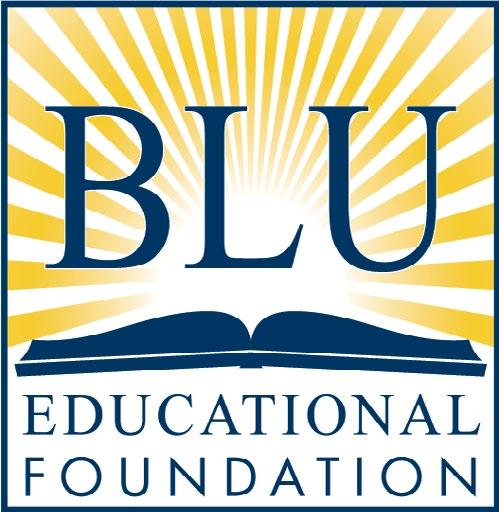


The organizations that organized the People’s Plan for San Bernardino and plan to implement these solutions are the Just San Bernardino Collaborative. These organizations include:
Arts Connection - the Arts Council of San Bernardino County

BLU Educational Foundation
Congregations Organized for Prophetic Engagement (C.O.P.E.)
Inland Congregations United for Change (ICUC)
Inland Empire Labor Council (IELC)
People’s Collective for Environmental Justice (PC4EJ)
Time for Change Foundation (TFCF)
Warehouse Worker Resource Center (WWRC)
Youth Action Project (YAP)
*Inland Empire Community Foundation, Fiscal Sponsor
The James Irvine Foundation, Project Sponsor

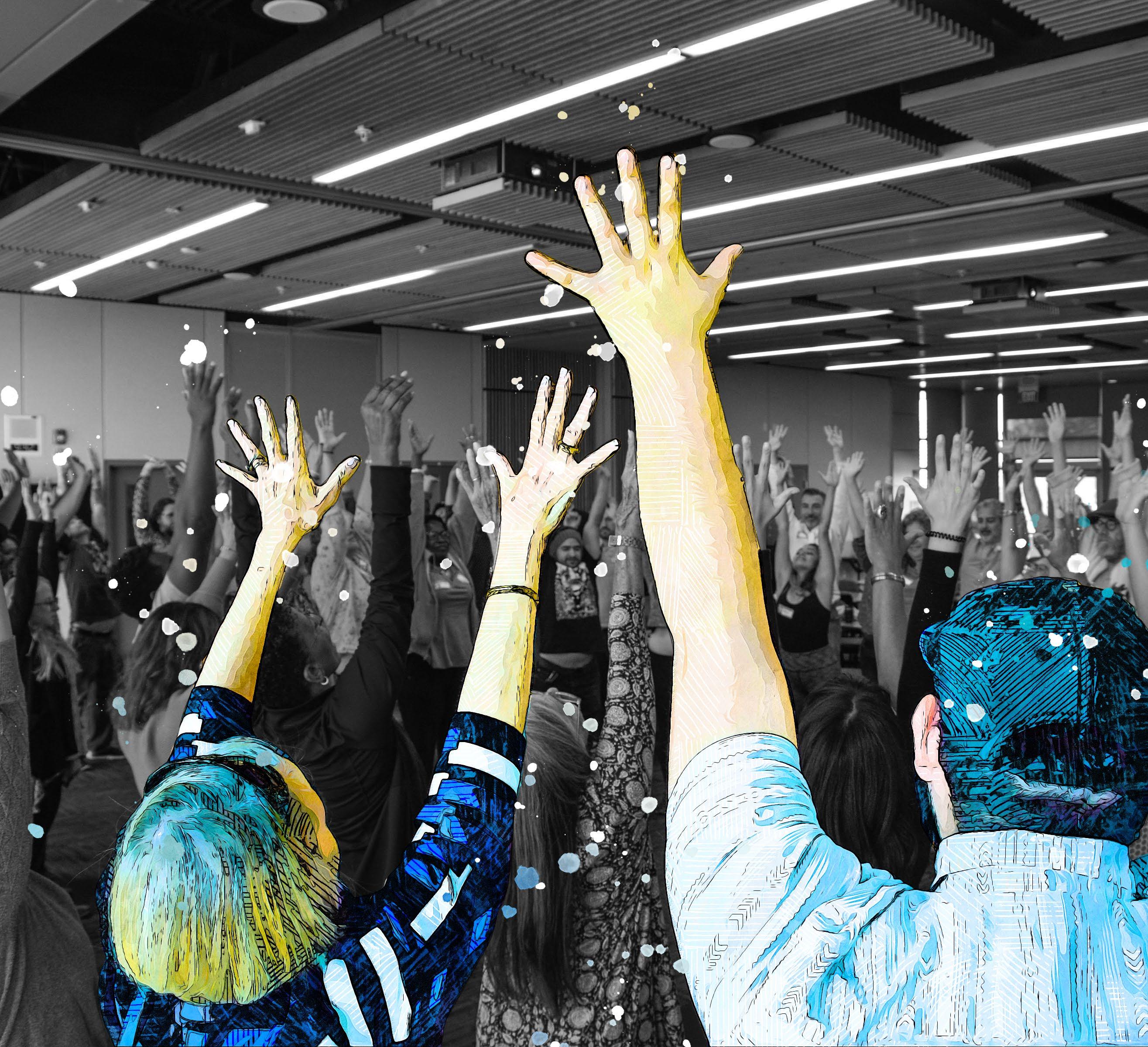
This project aimed to shed light on the issues that residents in the Inland Empire region felt should be prioritized to inform local policy and the actions of city government in San Bernardino. This study employed a community-based participatory research approach utilizing mixed methods to examine the experiences and opinions of residents in San Bernardino and the larger Inland Empire region (Riverside and San Bernardino counties) regarding the educational system, local government institutions, environmental justice, labor, affordable housing, arts and culture, and the criminal justice system. The community-centered research was led by the Just SB Collaborative, a coalition of 9 local organizations and one Data and Research sub-committee with diverse expertise and a background of advocacy in the Inland Empire region, to craft the research design and to identify the priorities of the communities involved.

Participatory Action Research (PAR) incorporates community-driven and actionoriented practices to intentionally shift power to the community. Prior to the Just SB data collection project, most of the organizations that participated in the collaborative were already practicing grassroots engagement with workers and community members within the larger Inland Empire region through a variety of strategies such as town hall meetings, leadership building activities, political campaigning, information sharing strategies, relationship-building activities, and digital outreach campaigns. As part of the community-driven strategy, Just SB sought out the ideas and opinions of people living with the consequences of those decision-makers whose actions have vastly impacted residents’ lives in San Bernardino. All research questions within the research were developed in collaboration with residents of the region.
The Just SB Collaborative will help to build community power through narrative and data sharing with the community via community forums in order to expand upon the research findings. These conversations have already started through Just SB-led town halls, community meetings, and information sessions. For example, one of the Just SB member organizations, Arts Connection, developed and conducted video podcast interviews with local “creative workers” to gain more insights into the issues that are most important to San Bernardino
residents. The intention of this strategy is to build power within the community in order to implement the collaborative strategies for bringing about the changes that community members are already imagining. Shifting power to the community allows for action-oriented steps to take form and ensures that the people’s concerns are the actual engine for change in the region.
Collaborative methods in research design and community engagement throughout the data collection process utilized an inclusive approach. In this approach, Just SB prioritized and worked to promote research participation at various events throughout the region. The inclusive approach aimed to disrupt the political strategies that have long ignored the community voices in the Inland Empire region. Methods included a survey instrument, focus groups, and one-on-one interviews. Collaboration with the California State University of San Bernardino (CSUSB) played a strong role in the formation of the research design and training. Representative s from Just SB and CSUSB formed the Data and Research team which facilitated training on how to conduct and follow research protocols, as well as designed the community survey and focus group questions.
What is
and why did Just SB utilize this approach?
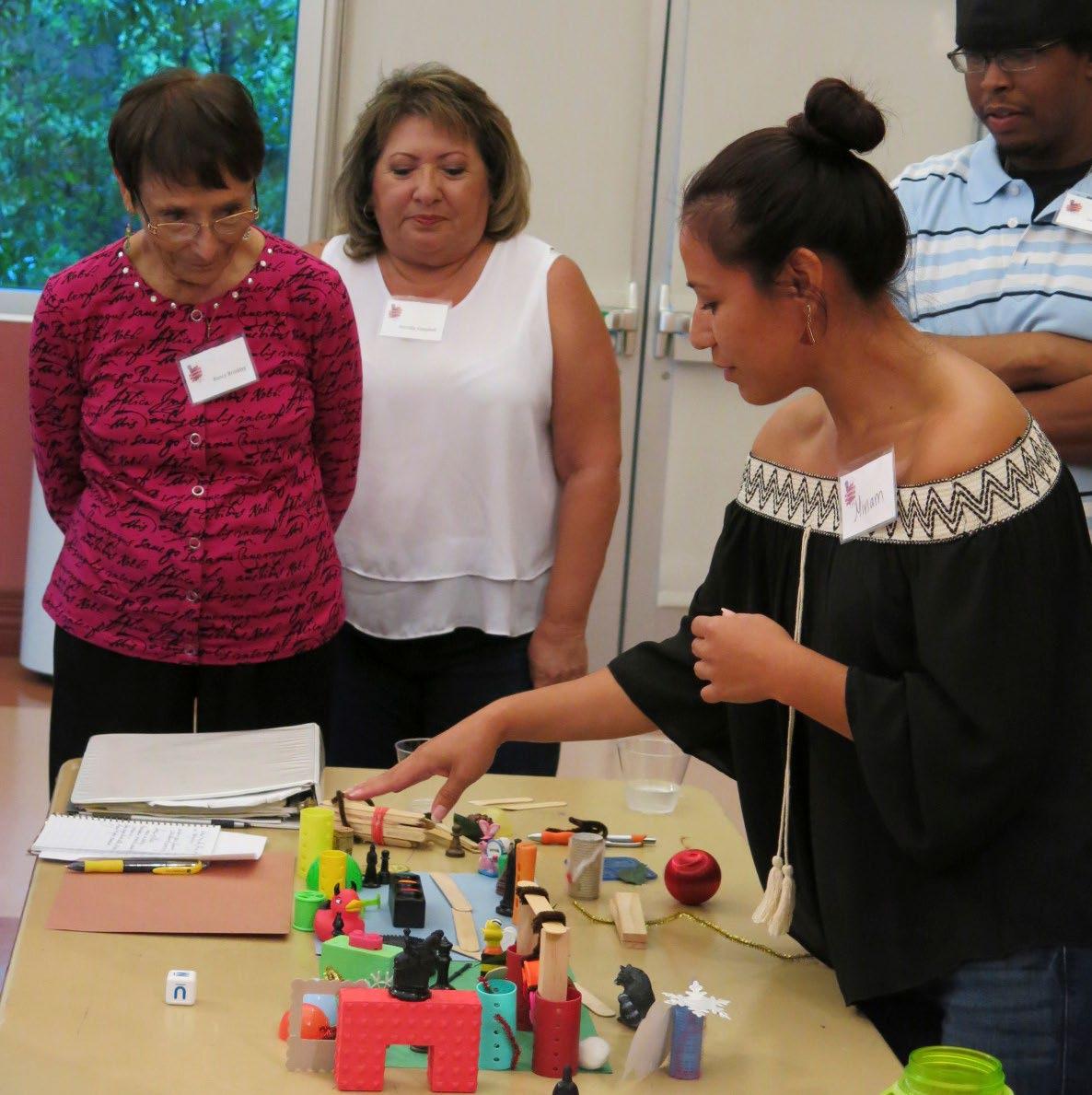
“

The Just SB Collaborative recruited research participants through existing community networks, door-to-door canvassing, and community events held in San Bernardino. Surveys were conducted at participants’ doors by canvassing organizers. Organizers followed up with survey participants and invited them to participate in focus group sessions or one-on-one interviews. Survey participants were also asked to invite or refer friends and family members to participate in the study. In addition to the survey, fourteen semi-structured focus group sessions ranging from 5-12 participants were conducted with residents of San Bernardino to address the following main areas: (a) perceptions of the local economy and employment; (b) opinions on the local educational system and areas for improvement; (c) challenges to
obtaining affordable housing and; (d) whether residents’ actual communities reflected their own perceptions of what healthy communities should be. To facilitate collaboration, focus group sessions were conducted in person and close to participants’ homes. In order to ensure safety and privacy, participants were given pseudonyms and all quotes were paraphrased for publication and public use. Additionally, the coalition conducted 72 semi-structured interviews, which allowed residents to elaborate on the topics and themes discussed in the focus group sessions. For interviews, each member organization emphasized on one or more thematic areas outlined in the focus group sessions. Interview questions were framed based on each organization’s expertise and awareness of the thematic areas.
The Just SB Collaborative surveyed 4,223 Inland Empire residents (San Bernardino or Riverside counties) who live, work, or go to school in San Bernardino, to better understand participants’ opinions and experiences with the educational system, local government, environmental justice, affordable housing, jobs, and the criminal justice system in the area. About sixty percent of the sample population identified as women (n=2424), followed by thirty-three percent of participants identifying as men (n=1323). The remaining participants identified as non-binary, transgender men, transgender women, and others who preferred not to state their gender identity. A little over half of the sample were Latinx or Hispanic (n=2320,58%), with about twenty
percent of participants identified as African American/Black (n=785), and eight percent identifying as Caucasian/White (n=328). About fifty-five percent of the participants stated that they were single (n=2187) at the time of participation. Roughly thirty-two percent of participants (n=1267) reported annual earnings of less than $25,000, while twenty-five percent of the participants (n=995) reported earning between $25,000 - $50,000 per year. The population sample for the qualitative portion of the study varied in age (17-75) and ethnicity (Latino/Hispanic, African American/Black, Native American, Caucasian/White, Pacific Islander, Asian, and multi-racial), as well as in identities of gender and sexuality.





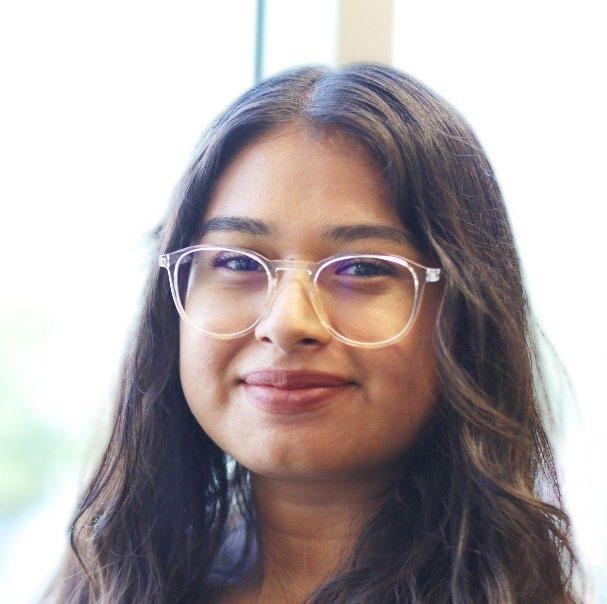


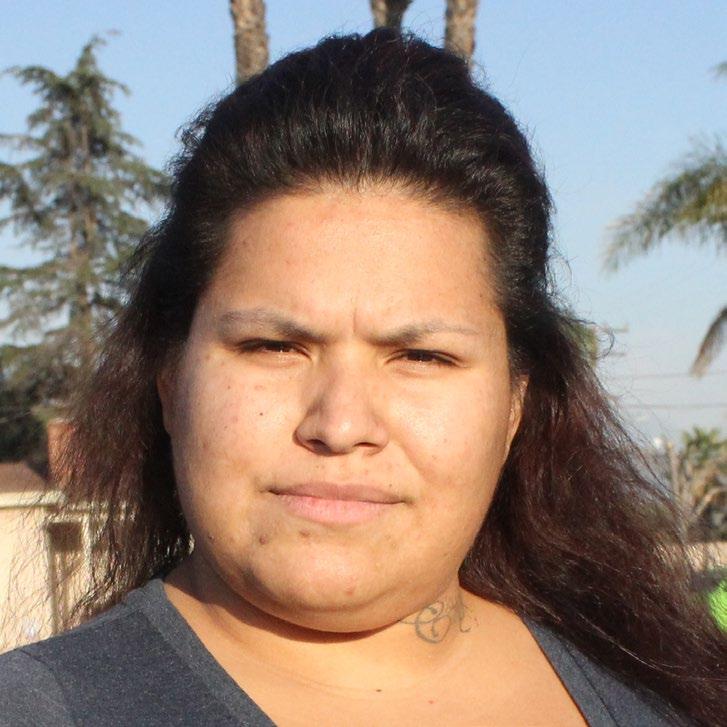


Qualtrics software was used for the development of the survey instrument, while the Statistical Package for the Social Sciences (SPSS) software was used to clean, analyze, and produce descriptive statistics from the dataset (i.e., frequencies, distributions, averages, percentages). Qualitative analysis consisted of a comparative and reflective approach used between and within focus group sessions and one-on-one interview write-ups. Organizations reviewed and coded participants’ narratives during the initial coding stages using a coding guide (provided by the Research and Data sub-committee) and open coding. This process helped to identify codes and themes that were later used and further
View the charts: justsb.link/data

developed in the focused coding stage. During the focused coding stage, themes and codes were reviewed by an interpretation subcommittee group (an extension of the data/research committee) that narrowed down the categories, themes, and codes by reviewing all qualitative data and field notes. The most significant themes and codes were applied to the rest of the data. The interpretation subcommittee group team, a smaller group of six team members who were consistently part of the survey instrument creation, focus group, and one-on-one interview process, reviewed all data and discussed findings. In these discussions, overarching themes emerged and research findings were interpreted.



Based on the community responses and the area of expertise of the organizations in our collaborative, the People’s Plan includes proposals for the following:
The Arts, Good Employment/Quality Jobs, Housing, Education, Healthy Communities, Entrepreneurship.
The findings of the People’s Plan are intended to guide our work into a new phase. Based on these findings the Just SB Collaborative and its constituent organizations will expand and direct their policy efforts and project strategies to efforts centered in the community-based economic development strategies detailed here. Instead of depending on outside structures and employers, we are looking for locally-rooted economic opportunities and projects that will keep capital in the community and support a holistic economic strategy.
In this section, we define “care” in terms of community perception of support from each other and city officials, as well as residents’ and city officials’ desire and ability to take care of or give back to the neighborhoods and the City of San Bernardino as a whole. Without addressing the idea of care and the broader sense of loss that residents express about San Bernardino, it is hard to move forward imagining and building a future that is collectively owned and determined, and that creates space for all residents to thrive. We believe in the transformative power of the arts, on an individual level and at the grander scale of neighborhoods, communities, and cities. We understand this to be instinctual, because the arts –whether imagined as painting, photography, dance, poetry, sculpture, or music – connect us to the stories of who we are and where we come from, and what we believe is important beyond our jobs, education, and physical addresses.


24% of people surveyed agreed strongly or very strongly with the statement that “the city does not care” about them
Freddy Calderon and Romulo Casillas are artists, organizers and small business owners in the City of San Bernardino
Freddy (a multi-talented photographer, event organizer, and film-maker) and Romulo (a designer, marketing manager, and film-maker) have worked for decades to establish themselves as artists and successful entrepreneurs in the City of San Bernardino.
“You have to wear like 20 hats to make it as a creative,” Freddy emphasized, but if you keep at it, you don’t burn bridges, and your work speaks for itself, you can grow and get referrals and you don’t have to struggle so hard to put yourself out there.
Being persistent and knowing how to create connections and build momentum is a skill both Freddy and Romulo insist have helped them as artists and inspired them to look beyond their own careers as well, to give back to the community and infuse more creativity into the life of Downtown San Bernardino.
About a year ago Freddy and Romulo started collaborating with organizers of the Downtown SB Arts Walk, including Kris Gonazlez, another of the event’s coordinators. Freddy and Romulo heard about the efforts and knew their expertise would be helpful, suggesting local talented musicians and dancers, like the Aztec Dancers. Their experience with visual marketing and design brought a lot of prestige and visibility to the event, making many folks in the community proud to support and excited for something happening downtown again.
Although the benefits to local business are also clear –Viva La Boba boasts its highest sales on the nights of those events – Freddy and Romulo insist that the effort is rooted in community engagement before business.
Local artists didn’t want to have to go all the way to Pomona to sell work, and residents wanted to see more happening in the city.
Other efforts like SB Food Fest, created and supported by Kim Knaus and Kenesha Boyd and volunteers at We Are The Change, have a similar impetus.
One of the threads connecting all of this work is the belief that the arts and artists have the power to inspire people to take care of a place, and become interested in seeing this city in new ways. That’s what’s happening right now; folks are tired of hearing all the negative press about San Bernardino, about hearing how there’s no history here.
Freddy spoke eloquently to this point. “There is a psychological effect on people if you see no one taking care of the city.” Folks begin to say the same thing – ‘well then I’m not going to care either.’ “But if you’re an artist now, we have to think about what the youth are seeing, and give them something to see themselves taking care of in the future.
We need to present the city’s history in a way that’s digestible and we need to take care of our historic buildings and document the murals and have a plan to plan and grow that program.”
The city has an opportunity here to invest in the youth and the creative energy that resides in the city and is actively supporting its regeneration.

As we developed an approach for the People’s Plan, our collaborative believed in the importance of including community, arts and culture in the discussion about jobs, education, environmental justice, and housing, because artists work across the perceived boundaries between these spaces, making connections and offering strategies for solutions that have the power to galvanize an entire city.

This is resoundingly what we have heard from the voices of the community: 24% of people surveyed agreed strongly or very strongly with the statement that “the city does not care” about them; another 36% were indifferent, suggesting that these residents also felt a lack of care or concern from the city.
How does a lack of care impact the lives of residents and show up in the infrastructure or lack thereof in the city?
Vacancy – property, land and streets.
Isolation – social, creative, and economic.
Divested workers – city, county and school officials and investors often don’t live in the city or directly support businesses and community events.
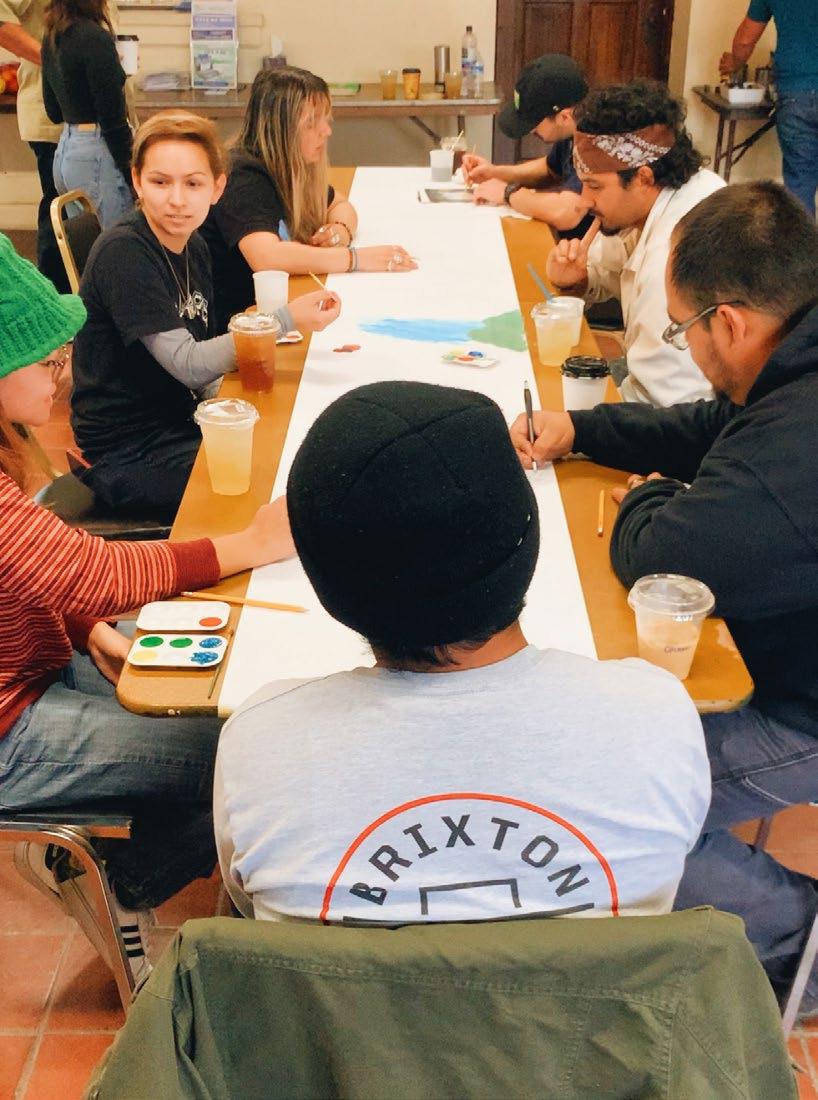
The numerous inequitable impacts that the residents of the City of San Bernardino have endured for decades continues to influence how residents interact with each other on a daily basis and the broader actions they take for their families and their futures. As demonstrated by the dozens of interviews we conducted, residents’ sense of hope and connection to each other and the city is tenuous, even though their love for the city endures. Many long-term residents and leaders end up leaving because they don’t feel like they can actually affect change and lack a sense of ownership over the narrative of what the future should hold for the city. Many brilliant artists and entrepreneurs have also left the city to start ventures in other areas because of greater material support and the ease of access they experience in cities like Redlands and Riverside. However, in our video interview series we spoke with generations of residents that have stayed and are committed to grassroots efforts. These efforts are providing opportunity not only for the community to gather and celebrate local artists and the cultural heart of the city, but to also provide consistent platforms for local vendors and artists to share and sell their work.
Kim Knaus is one such resident, who, along with her sister Kenesha Boyd and volunteers from We are the Change, a San Bernardino based volunteer group, launched the SB Food Fest almost two years ago. This monthly food, music, and arts celebration is mostly run by local volunteers. Similarly, the Downtown San Bernardino Art Walk, coordinated by Kris Gonzalez, Freddy Calderon and Romulo Casillas, has been building upon the last few years of local downtown efforts to integrate more arts and cultural events into the fabric of the city. While gaining some support from the city, the success
of these efforts rests on the shoulders of local, committed artists, leaders and organizers, many of whom are unpaid and use their own funds to cover operating costs.


The community survey results illustrate that residents of San Bernardino believe that arts and culture benefit their community. Across all ages, genders, ethnic background, and educational experience, residents resoundingly agreed that the arts encourage joy and relaxation and help them connect with their community. The residents expressed a sense of connection and belonging resulting from gatherings at community exhibits and art walks. They also expressed a sense of pride from seeing trees and flowers being planted on the streets, or from vacant lots being converted to gardens, and walls being adorned with locally inspired and crafted images and murals. This is how the arts and creativity can impact the sense of care that residents feel from the city and for one another and the collective future that we all hold the power to shape.
The arts reinforce healthy communities through creative investment and visible signs of care. Healthy communities in turn create the nourishing ground for local businesses to thrive. Artists in the city are already creating paths for this to happen. They are working together with other artists, business owners, and nonprofits to organize
clean-up events to keep their streets clean, to hire muralists and produce weekly events downtown and across the city, in parks, at community centers, and in neighborhood business parking lots. Residents and artists are taking ownership of vacant lots by planting native plants, starting community gardens to address food shortages, and creating jobs for themselves. Sam Castro is a powerful example of this type of community based action, and has supported multiple garden sites in the city by utilizing food waste to create a composting program.

The civic infrastructure to support the arts in the city needs more work. The city could easily follow the lead of local residents, such as Sam Castro, who are already taking actions to care for the city and could create jobs to further support community based actions. If we can simply imagine listening to what folks are already doing for the city with their own resources and their own organizations, then the path is clear.
Ownership and stewardship show up in many forms. Individual ownership of land and capital should be only one of many strategies. The city should creatively assign resources to engage residents in the work they are already doing to rebuild. Putting people to work means more than just living wages and a clean, safe place to live. It also means helping to create a shared sense of
ownership and investment in a future they feel connected to. This might happen by giving the community a percentage of the land and buildings that have been vacant for more than 10 years; helping the community determine what these spaces will become; and giving the community the training and the resources to build, run, and sustain these places.
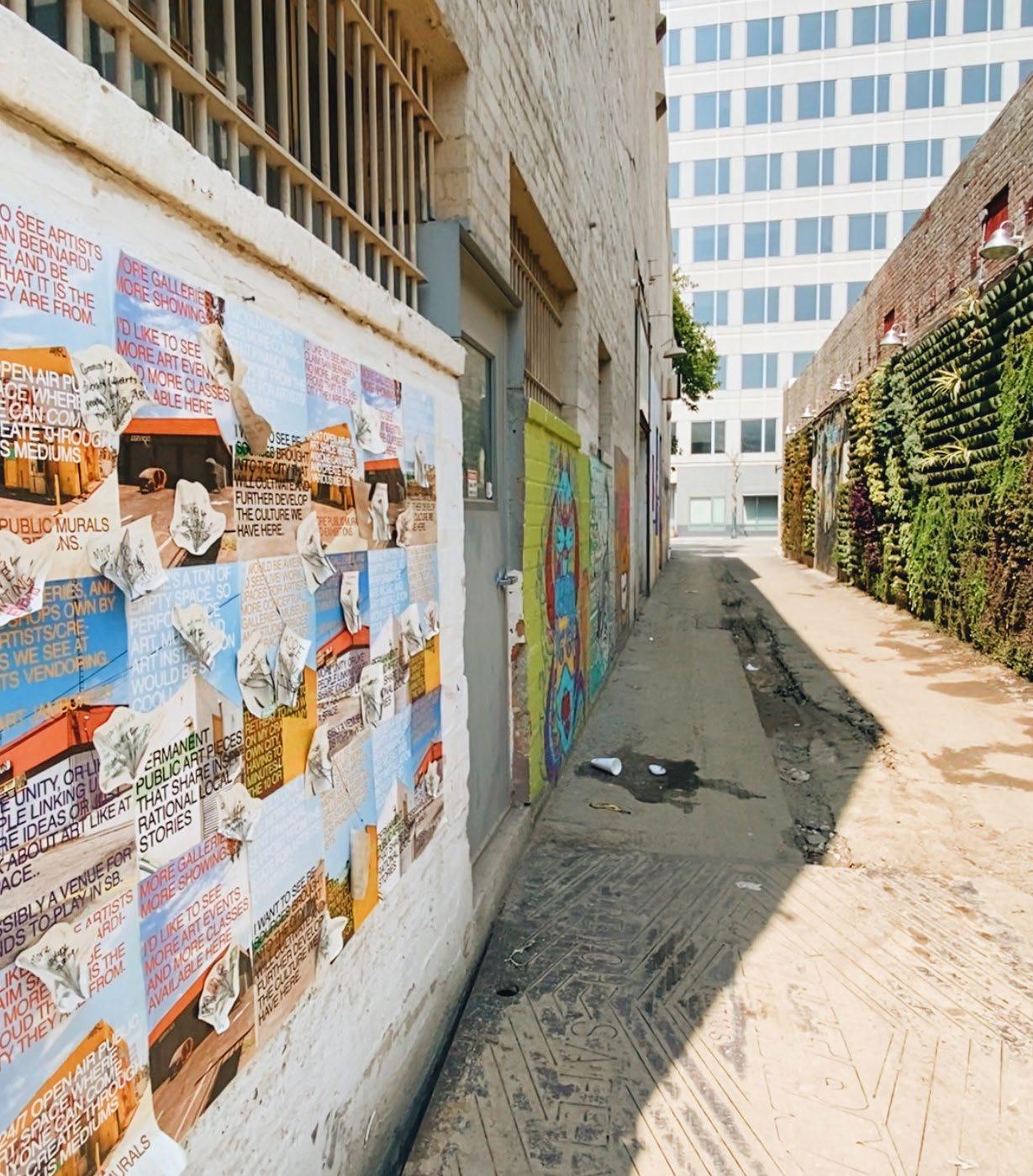
The city does not have a department dedicated solely to the arts. However, local residents feel that a dedicated department for the arts should exist in the city. Currently, the Fine Art and Historical Preservation Commission is embedded in the Department of Parks and Recreation.

support afterschool programs like Akoma Unity Center, the San Bernardino Youth Chorus, the Garcia Center for the Arts, the Little Gallery of San Bernardino, among others. As a result of this funding, concerts, youth art workshops, art walks and community art exhibits flourished in the city.
Before 2018, the city had a Fine Arts Commission, which helped to establish and run a city arts grant program.
The city arts grant program was originally funded through a ½% cultural development fee that was assessed on any new development projects approved by the city. In 2019, this funding was redirected and reabsorbed into the general fund and the remaining funds for that fiscal year were distributed in what would be the last arts grants cycle since 2019. Dozens of local arts projects, nonprofits, and schools relied on this money to
Economic research suggests that cities that are seeking to recover financially should support more arts and cultural activities within the city. For example, Creativeworkers.net explains that “Public artworks like festivals, fairs, murals, and performances drive other spending…With arts attendees spending on average about $32 per person on things such as “parking, restaurants, and local businesses every time they attend an arts event, driving billions of dollars in ancillary economic activity every year.” 1
Our interviews, focus groups and community conversations have all highlighted the loss of this funding. Access to regional grants and support for the arts is currently scarce and local businesses are unable to offer sponsorship to the degree necessary to sustain such events. The city needs to support this social infrastructure through reinstating grant programming and helping local CBOs access Community Development Block Grants funding for the services provided by the arts. Below, we have included a more complete list of resident recommendations:
Reinstate the cultural development funding and grant program.
Create a separate arts commission so that the arts have their own focus.
Create a budget line item overseen by the commission to support community-led monthly events in downtown San Bernardino and across the city in order to foster cultural development and further nourish community and cultural connections.
Develop an arts and culture plan as a part of the upcoming update to the city’s general plan. Items to include in this:
Zone for artist live/work opportunities and establish minimum requirements for local ownership and rent control. Encourage the establishment of an arts district within the downtown specific plan with its own funding and management coordinated by a Property Business Improvement District (PBID).
Create support mechanisms for local artists and future business owners to jumpstart new ventures and hold the city accountable for supporting local business development to a percentage of new businesses and development annually.
Establish an RFP process and local hiring procedures to engage local artists and youth in producing events, narratives, video and marketing for the city, drawing on talent and voices from within local communities instead of hiring marketing agencies and outside consultants.
Identify a central downtown building to establish an academy (depot or cooperative use space) for arts, music, and cultural exchange. Many of the educators, community groups and artists that were interviewed during this process mentioned the need for a collective space for learning, making and sharing art, music, and culture.
Integrate health and wellness components, including urban gardening and quiet spaces within the city, to connect with nature.
Public artworks like festivals, fairs, murals, and performances drive other spending…With arts attendees spending on average about $32 per person on things such as “parking, restaurants, and local businesses every time they attend an arts event, driving billions of dollars in ancillary economic activity every year.” 1
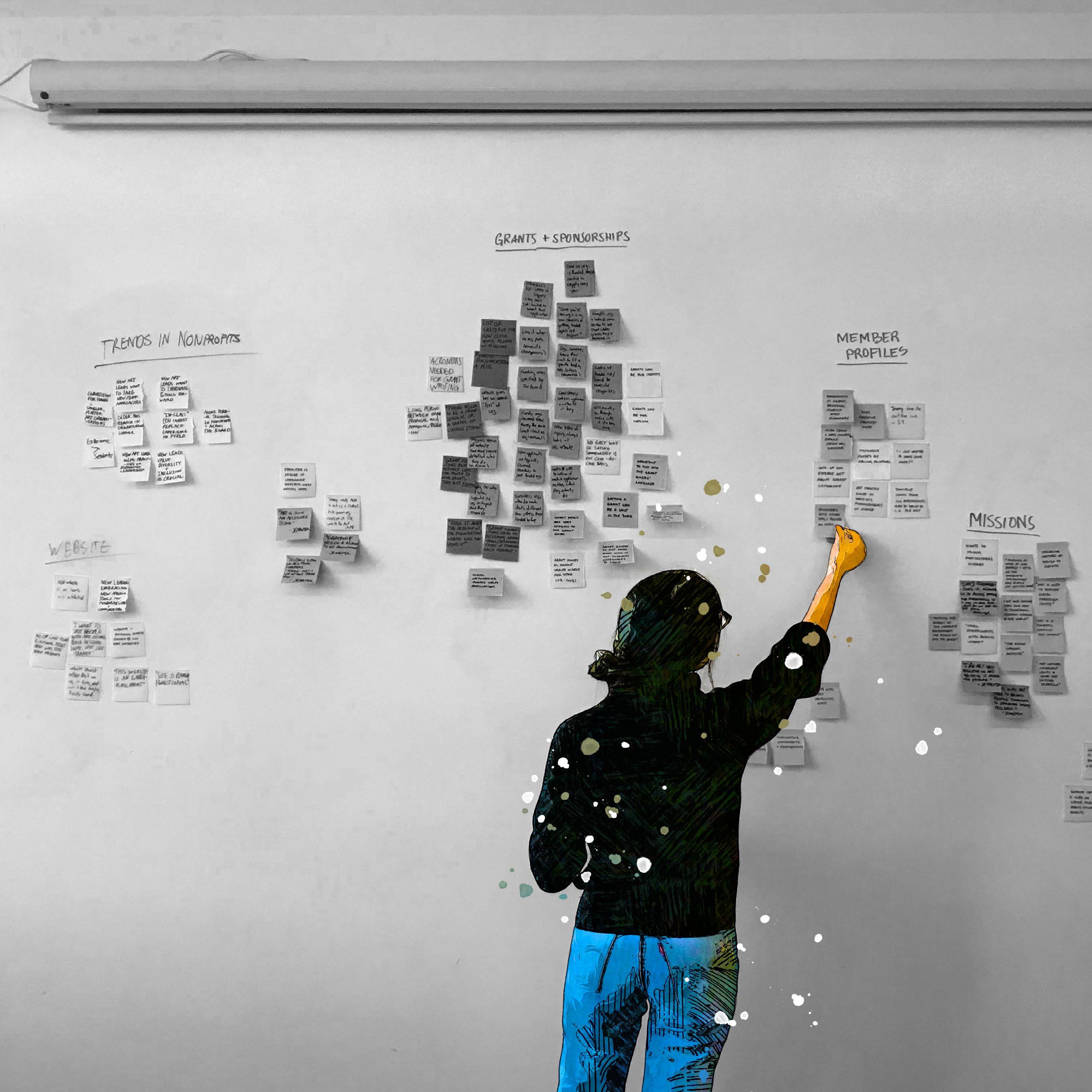

A community-owned and curated mixed use space, the SB Arts and Trades Academy is an idea that many in the community are talking about. We know that having access to arts and cultural experiences and arts education in and after school brings about many benefits. We spoke with Eric Servin and Freddy Calderon, both who attended Arroyo Valley High School. They spoke about the marked difference between students who went there before and after it was an arts magnet school. Another local educator, Richard Blacksher, specifically spoke to how students who attended the Arroyo Valley Arts Magnet program went on to more successful careers in whatever fields they chose, simply because they had access to the foundation and creative thinking provided by the arts education. Unfortunately, there is no space now in the city for students who go on to study arts, media, and creative fields to practice and have access to resources to support their growing careers. Cal State San Bernardino and San Bernardino Valley College offer woodworking, ceramics, and glassblowing programs and facilities. However, after students graduate from these programs they have nowhere to go within the city to practice and refine their skills, which further limits the possibility of finding career opportunities. For example, a regional ceramics manufacturer at A19 in Ontario, who produces ceramic fixtures for homes and businesses, explained that she is having trouble finding skilled workers to hire.
In our interviews and focus group with local artists and teachers, many expressed regret that they currently have no way to make a full-time living wage in their field. Many explained that they wish they had skipped higher education and would have instead completed a trade or vocational program in order to apprentice and put their visual and production expertise to work right away. Instead, many end up working in the region’s warehouses, or taking betterpaying clerical and office jobs to sustain their art passion.
We can fix this by building, or repurposing a vacant space for a cooperative learning & cultural exchange program that is connected to our local university and college programs but that exists independently as an interstitial, flexible hub to nourish ongoing creative learning. This facility would serve as:
A cooperative learning space, resource center, and marketplace for showcasing local work and goods. A place where artists could practice making and selling their work and showcase their creative talents to regional visitors to the city.
A cultural hub for events accessible to all residents, artists and performers that would include performing and recording spaces, equipment rentals, etc.
A community institution, supported by traditional institutions (city, county, schools), connecting capital and mentors to the residents in a way that helps develop a feeling of shared ownership and allows them to self-direct their own education and career tracks.


According to 2022 data collected from Jobs EQ, the data processing platform through Chmura Economics and Analytics from San Bernardino County’s Research and Analytics Department, there are 2,905 jobs in the dozens of creative fields in the city of San Bernardino. These jobs include software development, technical writer, marketing directors, production and planning, camera operators, editors, and visual artists, just to name a few.
There are 5.1 million “Creative Workers” in the United States, as identified by the Bureau of Economic Analysis. According to the Bureau of Economic Analysis, a creative worker is anyone who earns income from creative, cultural, or artisticbased pursuits, whether independently (as an independent contractor, solo entrepreneur, or gig
worker, for example) or via an employer. Creative workers use the unique human quality of individual expression to produce ideas, content, goods, and services.²
Out of the dozens of artists we spoke with, almost none of them were able to find full-time employment putting their talent or craft to work. The Bureau of Economic Analysis’ report lists the demand in each of these fields and the lists of postsecondary awards given to students related to the skills these careers required. The current demand for more than 70% of these jobs is below 4% annually, meaning that most students graduating with general arts or communications degrees aren’t learning specific enough skills to find work that matches their training. So how do we address this employment and training gap?
These are all skills-based trades that don’t fit traditional educational tracks. All of these careers require much more specific and specialized training. So why doesn’t this training exist yet within the City of San Bernardino?
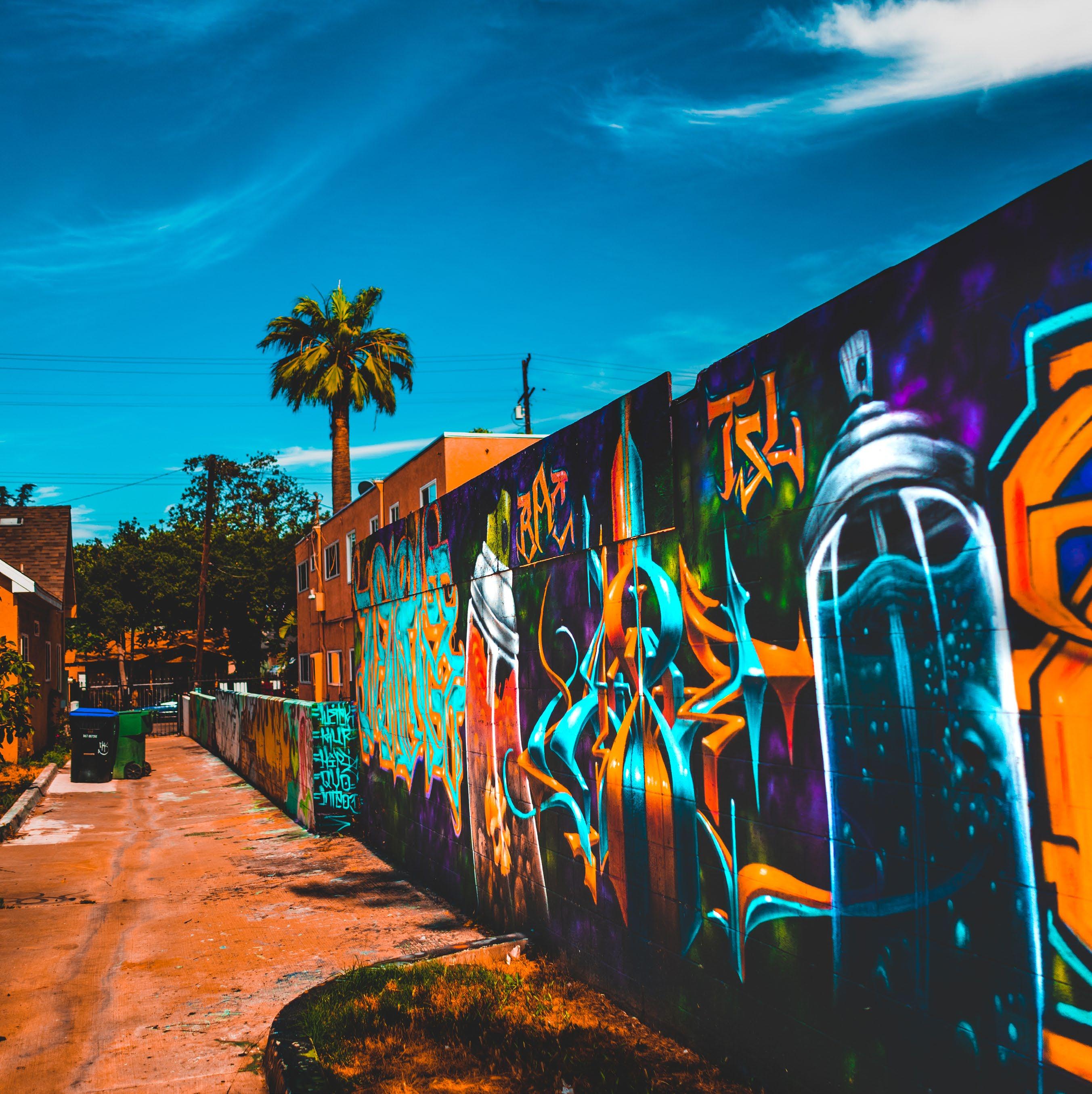
San Bernardino Valley College hosts the Inland Empire Media Academy for specialized degrees in film, media and entertainment. However, the number of graduates of this program is still not meeting the field’s demand for workers with high level management and production abilities. This kind of training and experience go beyond postsecondary support. Where are we missing out on an opportunity to develop our youth before they even leave high school?
Education research reminds us that arts-rich programs are far more effective in boosting academic achievement than arts-poor programs. This is even more the case for marginalized groups, with arts education resulting in higher GPAs and reading scores on standardized tests for these groups. Students who experience arts education are more likely to attend postsecondary school than non-arts students. 3
“ There are 5.1 million “Creative Workers” in the United States, as identified by the Bureau of Economic Analysis. According to the Bureau of Economic Analysis, a creative worker is anyone who earns income from creative, cultural, or artistic-based pursuits, whether independently (as an independent contractor, solo entrepreneur, or gig worker, for example) or via an employer. Creative workers use the unique human quality of individual expression to produce ideas, content, goods, and services.2
Wendy Aguilar, 17, has a lot of concern about the lack of job opportunities for residents in the City of San Bernardino. She’s especially worried for the homeless community who are stigmatized because of their living conditions.
“As we’re driving to school, I see parks filled with the homeless,” says Aguilar. “There’s jobs out there, but it doesn’t mean everyone has the same opportunities to fill those jobs.”
While Aguilar proposes immediate solutions to help people experiencing homelessness or residents straddling the poverty line, such as setting up shelters and providing wrap-around health and food resources, she believes addressing economic hardship begins within the walls of San Bernardino’s high schools. Expanding educational and career opportunities for students will help increase job attainment, and ultimately keep youth from leaving San Bernardino.
“Not everyone wants to go to college,” said Aguilar. “So, expanding more vocational and art-based career opportunities can offer youth strong alternatives to traditional higher education that go beyond the existing job opportunities we have now.”
Aguilar also believes that more economic opportunity will encourage younger residents to become more engaged in conversations around community development. She mentioned the city’s
current discussions around the general plan as a great opportunity to demand things like more green spaces and affordable housing.
“Having the youth give input on these issues will provide leaders with more well-rounded perspectives.”
As we’re driving to school, I see parks filled with the homeless,” says Aguilar. “There’s jobs out there, but it doesn’t mean everyone has the same opportunities to fill those jobs.”
“


Develop and connect a creative career pathway in the cradle to career system in the local school districts and county, beyond just Arts, Media, and Entertainment. This track should include artisan and goods manufacturing tracks, and apply skills based learning that is connected to the specific skills needed for real jobs waiting for youth in the field today.
Pilot an apprenticeship program, connected to the trade-skills center mentioned previously, to train and connect students to full-time employment in media and goods production, and other indemand careers such as content development, creative direction, graphic design, and project management.
Create positions for arts management (arts education) at the school, city and county levels to bolster student programs, trainings, events and programs that foster local public artwork creation, festivals, murals and performance centers and highlight the potential of careers in this field.
Lift up local makers, producers and voices and promote their contributions more publically using City and County marketing. Hire local producers to develop regional messaging and embed an authentic community voice within the cultural narrative of the region.
Education is a central component of a comprehensive economic growth and development strategy. The efficiency of the San Bernardino Unified school district has long been in question by the community. Interestingly, it is not the low high school graduation rates in San Bernardino unified that residents have questioned. Instead, the community has questioned the lack of social preparedness that students exhibit once they have graduated. This lack of preparedness has translated into low levels of college readiness, less than adequate educational services and limited career options exposure for students, all of which have negatively affected the economy of our beloved city. We intend to make systemic changes in our local educational system that will perpetuate the social and economic success of our community as a whole.


As a Public Policy and Advocacy Fellow with BLU Educational Foundation, Olani LaBeaud became involved in civic engagement due to her passions for community service and advocating for those who may not have the resources to do so.
BLU Educational Foundation is a nonprofit organization based in San Bernardino that focuses on college and career access, leadership development, civic engagement and the arts. Olani’s journey with BLU spans throughout her adolescent years into her current role with the organization. Throughout high school, BLU played a pivotal role in Olani’s educational journey by providing guidance, advising, and overall educational support. In addition to developing and delivering exceptional services and programming, BLU takes pride in being a support system throughout students’ educational journeys. This is monumental, as it is crucial that students have a support system, not only during college, but during their paths to success and graduating with the necessary tools to thrive.
As a proud community member of the Inland Empire, Olani continues to have a passion for serving the community that poured into her by giving back in any capacity when opportunities arise.
“I believe we deserve to live in a community with equitable access in education, information, and resources to all students, especially those who are actively underrepresented. We are only as strong as our community and we must work actively to ensure that equality is present in the different social institutions, including education and everyday practices.”
I believe we deserve to live in a community with equitable access in education, information, and resources to all students, especially those who are actively underrepresented. We are only as strong as our community and we must work actively to ensure that equality is present in the different social institutions, including education and everyday practices.”


Among those residents surveyed for this project, 24.6% of participants had earned their high school diploma or GED, while 22.4% have some college education and only 13.4% had completed and received their four-year degree. These numbers show a shocking trend in the community that highlights the continuous decline in academic success and validates the community’s concern of the school district’s efficiency. These results raise important questions about the connection between the high school diplomas awarded to our students and their readiness to pursue a higher education.
Our survey data also shows a strong disconnect between the value of college degrees and the number of community members in San Bernardino who have actually attained one. Our survey revealed that while less than fifteen percent of community members finished their college degree, an alarming 60% of participants strongly believed that it was important to receive their traditional
or vocational college degree. To add to this, only 24% of participants agreed that their K-12 school counselors at their schools introduced them to enough college and career options. Even more alarming is that a mere 22% of people agreed that they had access to opportunities and career exposure while in the K-12 system in San Bernardino. These data points validate the need for the continuation of the systemic and direct services work that we do in the community in an effort to increase college readiness levels and career access and exposure.
In addition to our survey, we also held community focus groups which allowed us to look deeper at community members’ educational experiences and their feelings about education. These focus groups shed even more light on the work that we must do to improve our K-12 educational system here in San Bernardino.
of participants strongly believed that it was important to receive their traditional or vocational college degree. 60%
of participants agreed that their K-12 school counselors at their schools introduced them to enough college and career options. 24% 22% 53
Becoming a teacher didn’t start out as one of Kameron Pyant’s dreams. However, he grew to understand the importance of providing communities with culturally responsive educators. He knows that there is an unfortunate abundance of students who are in the spaces of educational development and may never see someone who provides them cultural, ethnic, and racial representation.

BLU Educational Foundation’s focus on education and career pathways is in direct alignment with Kameron’s journey. As we continue to champion the establishment of clear viable career pathways within our education system, it is also important to uplift the employment of effective and diverse teachers. Kameron mentioned wanting to “provide students with prominent resources, direct them to conceptualize within their own lives as well as promising avenues that will encourage them to continue on the paths that they have chosen for themselves.” It is important to guide students into pathways that they are passionate about rather than those that many just choose as a default.
Often this responsibility falls in the hands of our teachers which is why men like Kameron are necessary for San Bernardino’s education system and the success of our students. “One of my goals is to affirm my students where they are not self-assured – I want them to know that they have a teacher who cares not only about the work they turn in and their professional/educational development, but their lives as a whole.”
One of my goals is to affirm my students where they are not self-assured – I want them to know that they have a teacher who cares not only about the work they turn in and their professional/educational development, but their lives as a whole.”
“
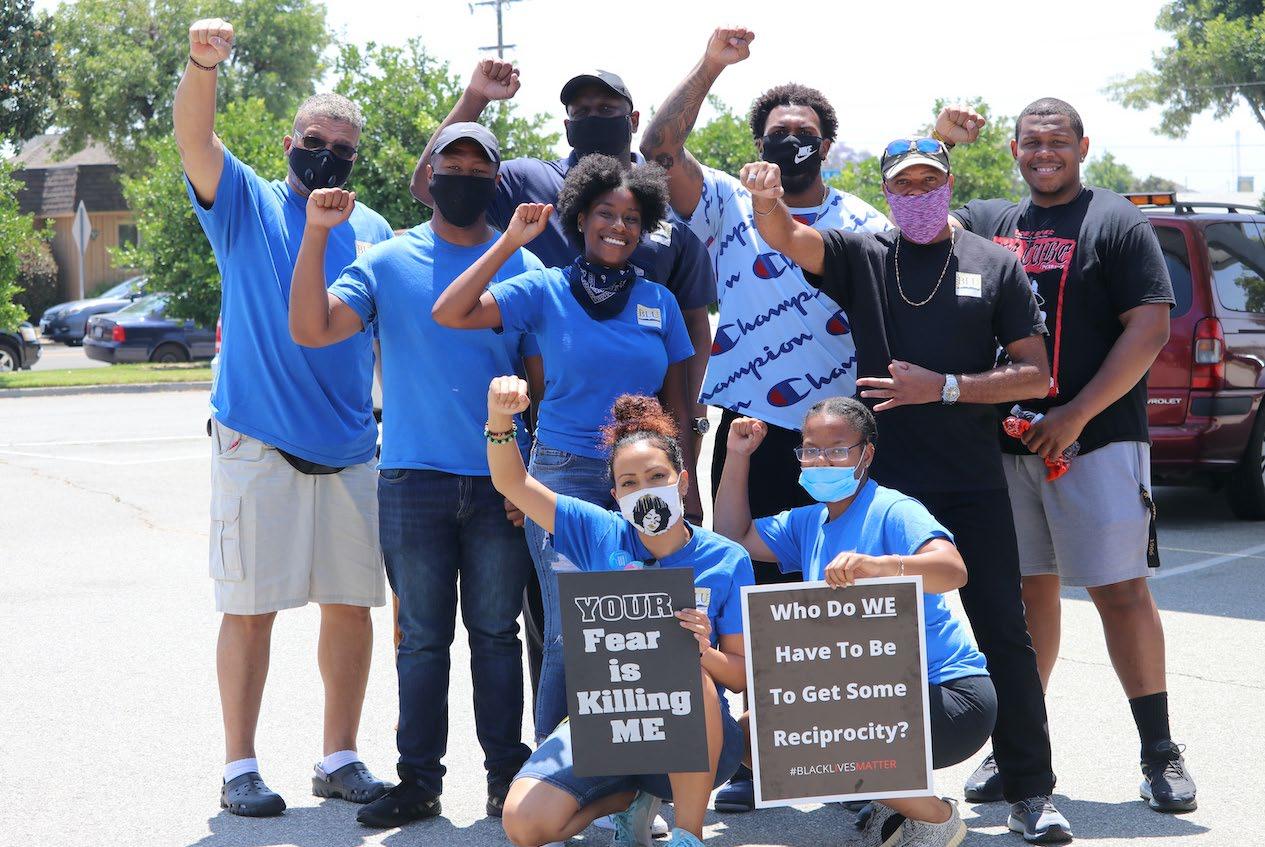
The need for more resources and general guidance at the k-12 level. These resources included general funding, specialized programs and proactive academic counselors. The lack of information about higher education alternatives such as trade schools or other vocational training.

“
The two most reoccurring themes brought up by the community regarding their k-12 education infrastructure were:
1. 2.
BLU Educational Foundation has been directly serving the community of San Bernardino since 2001. The foundation’s work has been dedicated to responding to the higher education challenges faced by community members with limited resources and opportunities in the city. Each year the organization provides students with college academic advising, scholarships, and trains community members with the leadership skills to advocate for our community’s education needs. BLU’s work has also affected systemic change, as they were at the forefront of efforts to pass AB 132, which made it a requirement for students to complete their FAFSA before graduating high school. The FAFSA is an application for government supported financial aid that is awarded to help low-income students pay for tuition, school fees and other school related expenses. BLU has also been heavily advocating for Black students to be specifically named in the district’s Learning Continuity and Attendance Plan (LCAP). Success in this area would ensure that state funds be directly allocated to support Black students in the K-12 system.
As part of the foundation’s work tending to the community’s educational needs, the BLU foundation has spearheaded a timely initiative – Purposeful Pathways. This initiative is centered on providing students with guidance and exposure to impactful
careers in growing industries. This early exposure will increase students’ access to mentorship, internships, hands-on experience, informed purposeful course work, and careers that could greatly change the landscape of our communities.
Both of these concerns beg the question, how can we implement more support, funds and information that can be directly inserted into the K-12 school system in San Bernardino Unified?
Residents in San Bernardino are continuously faced with poor air quality, health issues, and displacement from the ongoing expansion of the logistics industry in the region (De Lara 2018)4. In the past decade, warehouse development has drastically grown in the Inland Empire. Currently, there are over 20 million square feet of warehouse space added every year within the region (Sowinski 2017)5. The combined spike of warehouse development and the regional growth of the logistics industry (rail and ports) has greatly increased emissions and the presence of polluting diesel trucks in the city.


Jose Avalos, a worker from the food industry, is a long-time resident of San Bernardino who has lived in this community for 19 years. Jose describes pollution in the city as a major issue:
“I definitely believe that the air is making us sick, there are more trucks and smog in our city, and the water is contaminated. My neighbor, who is 9 years old, has asthma. We really don’t know how all of us are because we don’t get our lungs examined, if we did, I’m sure we would all be complaining.”
Avalos first moved to the city of San Bernardino in 2003 and recalled the city having a safer and cleaner environment. One with fewer trucks, smog and with more activities for families. “I would be distracted from work and feel happy to be around. Now the parks are abandoned by the city, there’s too much pollution and trash. Where are the family parks where kids could run and not get hurt with needles?” said Avalos.
As a long-time resident, Avalos has felt that the leadership in the city of San Bernardino has not committed to bettering the city for many years and hopes to see a change in mayor and city leaders who will stand up for the families in our city.
I definitely believe that the air is making us sick, there are more trucks and smog in our city, and the water is contaminated. My neighbor, who is 9 years old, has asthma. We really don’t know how all of us are because we don’t get our lungs examined, if we did, I’m sure we would all be complaining.”

Due to the expansion of the supply chain and e-commerce services, the logistics industry continues to grow rapidly in the region. And, along with the growing number of warehouses in low-income communities of color, such as San Bernardino, come hundreds of polluting diesel trucks. A study conducted by the People’s Collective for Environmental Justice (PC4EJ) found that 80% of all warehouses in the Southern California region were located in zip codes where people of color predominantly live.6 Furthermore, San Bernardino residents are also burdened with disproportionate numbers of environmental hazards, including toxic waste facilities, cement plants, garbage dumps, and other sources of environmental pollution and foul odors that lower the quality of life. Exposure to such hazards is a direct outcome of the environmental racism that residents in San Bernardino continue to face.
The People’s Collective for Environmental Justice (PC4EJ) has worked closely on environmental issues in the region. PC4EJ intends to fight environmental injustice and challenge the cultural and systemic roots of white supremacy. San Bernardino has historically targeted low-income and people of color communities for development strategies that have obvious negative health and environmental impacts on the residents of these communities. This has led to the area being referred to as a “diesel death zone”, a term coined by physicians to describe an area heavily impacted by diesel exposure and the harmful health impacts associated with living and working close to diesel emissions.
PC4EJ’s involvement in San Bernardino has led to its partnership in the Just SB Coalition and is a crucial part of collecting this research.
According to the 4,223 people surveyed within this study, more than 70% of residents stated that they, or someone in their family or neighborhood, have asthma and /or other respiratory issues.7
Looking at Table 1 below, these numbers reveal the majority of our community members are dealing with respiratory health impacts due to San Bernardino’s high exposure to air pollution.
Related to the high rates of asthma in San Bernardino, 50% of the people we spoke identifying as transgender women, 30 % identifying as men, 30% percent identifying as woman, as well as 50 % identifying as nonbinary, believe that the community in which they live is making their residents sick. According to a study on warehouse pollution and social disparities, authored by the People’s Collective for Environmental Justice: “Asthma rates and cancer risks are drastically elevated in areas closed to ports, warehouse distribution centers, and other freight corridors that bring residents in contact with pollution from heavy-duty vehicles.”
As we continue to look closer at this data, residents of San Bernardino have environmental concerns that the city has yet to address. Our survey revealed that, among those surveyed in San Bernardino, air pollution, warehouse expansion, water quality and wildfires are among the top environmental concerns that residents had.
On the topic of environmental justice and health, PC4EJ conducted 32 interviews. The participants for these interviews were primarily residents who have been living in San Bernardino for more than 6 years, from ages 1220 and 40-65. In addition to the interviews, PC4EJ also conducted two focus groups: one focus group in Spanish with 8 participants and one in English with 4 participants.
The interviews and focus groups allowed us to hear firsthand from residents of San Bernardino about the concerns they have with issues in their community, which were focused mainly on air quality, safety, cost of living, affordable housing, education, and labor. These focus groups emphasize even more about the work the city needs to continue doing in order to address the direct impacts of environmental racism.
Lucia Aguilar, a resident of San Bernardino who has lived in the city for more than 20 years and recently lost her warehouse job due to the Covid19 pandemic, stated that the warehouses around schools and homes affect her community’s health and safety. She explained,“The environment in which we live is affecting the health of my husband. He is sick, he cannot breathe without oxygen because his lungs are no longer working, due to the air pollution.” Lucia also feels that the city is not clean, and all the trash and toxins affect their health. Lucia goes on to say that “There are no sources of work, only jobs in the warehouses, housing is very expensive, on top of that in the pandemic we lost our jobs.” For Lucia, her ideal community in San Bernardino would have more sources of work, affordable housing, and most importantly clean air.

 - Lucia Aguilar, resident of San Bernardino
- Lucia Aguilar, resident of San Bernardino
There are no sources of work, only jobs in the warehouses, housing is very expensive, on top of that in the pandemic we lost our jobs.”

Our survey showed that the health of residents and their families is an overwhelming concern and priority. We recommend that there needs to be an increase and improvement of environmental health awareness and protection strategies for residents in San Bernardino. For example, more accessible workshops, programs, and educational events that provide information about what steps residents can take to protect themselves from pollution are needed. The City should also invest in offsetting or subsidizing protection methods, such as air and water filtration systems, vegetation, and physical barriers to toxic sites. It is also important to have regularly updated data about air and water pollution levels that are accessible to all community members.
We need to be actively investing in reducing and eliminating existing sources of air and water pollution. We recommend not moving forward in approving any projects that bring in more air or water pollution to the City of San Bernardino. We believe that the City can require investments from existing polluters for emission control and reduction technology. Strategies such as a parcel tax or development standards could also require the industry in the City to do more around reducing their environmental footprint. We also believe that the City has an opportunity to bring in and attract businesses that manufacture, train and create jobs in clean energy such as solar, and electric infrastructure, goods movement electrification upskilling and other regenerative industries such as agricultural and waste reduction.
Environmental health is not the only concern facing communities in San Bernardino. Survey participants also explained that making ends meet is consistently a struggle for many families in the City. The City needs to promote and require employers to provide jobs that pay prevailing wages, sustain stable employment, and require time off while investing in mutual aid. Over the pandemic, we have seen an increase of community members starting and participating in mutual aid groups to make sure that everyone in the community has their basic needs met. We recommend investing time and resources to support these collectives’ efforts while advocating for better job standards.
“Housing is the key to reducing intergenerational poverty and increasing economic mobility. Research shows that increasing access to affordable housing is the most costeffective strategy for reducing childhood poverty and increasing economic mobility in the United States. While many developers have coined the term “affordable”, most low and very low-income residents cannot afford what has been deemed as affordable housing. Instead of qualifying for the newly developed affordable units, residents are being pushed further into poverty, and worse, homelessness. We need to create housing that will be made affordable to San Bernardino’s most low-income populations.” - National Low Income Housing Coalition


Housing poverty refers to the situation of having a place to live or rent, but having the costs for that housing amount to more than 30% of an individual’s or family’s total income
Shaniqua Parker came to Time for Change Foundation’s (TFCF) housing program with one thing in mind, getting her children back. She found out about TFCF during her last time in jail where she saw their flier and realized it was time for her to change.
After being released from jail, Shaniqua went straight to Time for Change Foundation and began her journey to self-sufficiency. Being welcomed into a safe, stable home is exactly what she needed to get back on her feet and get her children back.
“It’s been a very hard struggle [finding affordable housing] because once they run my background, even though me being arrested should have nothing to do with me in an apartment, it always does.”
Finding affordable housing that will accept her, despite her criminal background has been a difficult journey.
“It always affects you, you know. Like, why are you researching and checking my background for an apartment? It’s not a job, you know, but I’ve been turned away multiple times, a lot, actually.”
Shaniqua believes that people should not have to continue to suffer for the crimes they’ve already paid their debt for. In addition, having programs that support formerly incarcerated individuals like TFCF
make it possible for people to have second chances. Time for Change has helped Shaniqua transition into permanent housing despite her background and as a result, she has regained full custody of her kids. None of this would be possible without having housing support from TFCF.
“
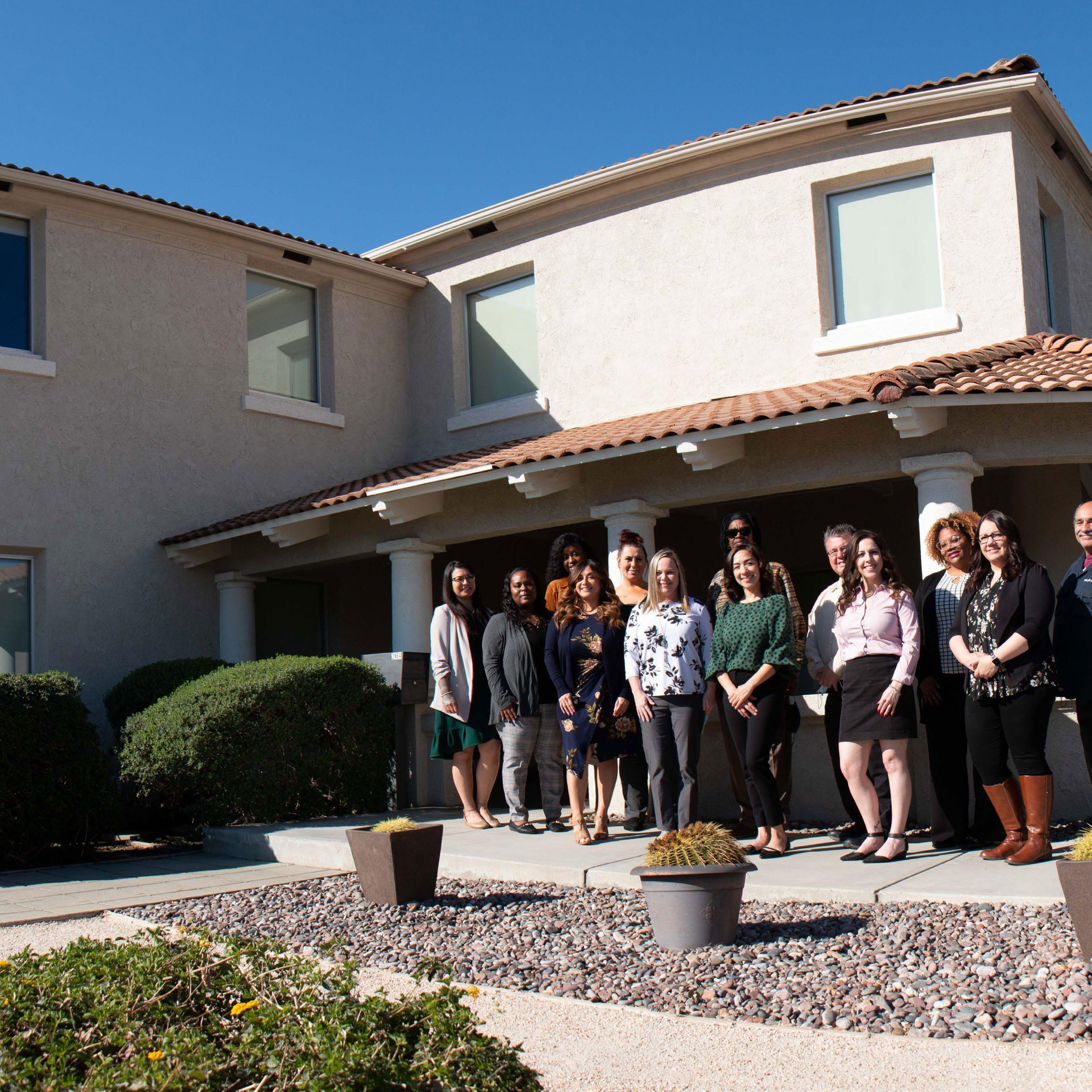

In San Bernardino, one of the long-existing problems has been access to affordable housing. In San Bernardino, community members experience a vast difference in quality of life, which is heavily determined by local costs of housing. Due to our current economic climate, home ownership has become increasingly difficult. For some in San Bernardino, securing housing is an impossibility while others are forced to make severe sacrifices over periods of 5-10 years while saving for a down payment on a home. As a result of rising costs of living and stagnant wages, any
potential mortgage savings are at risk when a medical emergency, accident, death, job loss or a combination of the above. In any of these cases the possibility of home ownership becomes majorly set back unless residents have access to some type of capital such as years’ worth of savings, a vehicle they can sell, or the like. In some cases, personal emergencies even mean the loss of current housing, in which case future home ownership is lost as an option altogether.
This state of vulnerability to housing insecurity over a single emergency expense illustrates the concept of ‘housing poverty.’ Housing poverty refers to the situation of having a place to live or rent, but having the costs for that housing amount to more than 30% of an individual’s or family’s total income. In most cases, the rest of the income is further split between basic human living needs such that further cutting expenses to meet continually rising housing costs creates even more risk. Further Highlighted by Tables 2-6 (see appendix pg.), costs of living, including housing costs, rise faster than local wages. On top of this, families are forced to compete with incoming residents who are able to take advantage of lower local housing costs than more affluent neighborhoods. This in turn adds to the rising number of homeless residents in the community.
For residents in San Bernardino, the average or market rate for a 2 bedroom, 1 bath apartment in the city is $1390. This means that someone would have to take home $4700/month in order
to be beyond the housing poverty threshold. According to the 2020 census, the median household income in San Bernardino is $45,834/ annually. The reason for the 30% distinction in the housing poverty threshold is that costs of living outside of housing which include the basic human necessities such as food, clothing, water, and transportation are just as subject to the changes affected by inflation and its relation to wages. For Homeowners, the median listing price for a house in San Bernardino is currently $449,000. And, in order to qualify for a mortgage loan on a house purchase one must have saved 3.5% ($15,715)20% ($80,000) of the purchase price for the downpayment.
As shown by our findings in figure 1, owning a house is not affordable for individuals living below the average income in San Bernardino. Mobile Home Residents similarly require a down payment or lease for a home where the tenant also pays rent for the lot in addition to their mortgage. This results in housing costs similar to that of a
traditional rental, but with added complicated restrictions. For example, Mobile Home Leasing Offices in San Bernardino manage their own financing companies which specifically target immigrant families to lock them into 30 year mortgages at predatory rates of 14% or higher. However, these leasing offices also hold them to strict regulations creating the opportunity to evict the families, before or after they finish paying for the home, so that they may repossess the unit and sell to a new buyer. Thus, a looping economic engine is created for the company owners at the cost of families’ livelihoods. As figure 1 from our survey data shows, 20.8% of people in San Bernardino do not rent or own a home, compared to the 22.6% that enjoy home ownership. Further research and analysis is needed to understand how much of the 20.8% are youth, or unhoused community members, or both.
According to the 2020 SB County Homeless Point In Time Count Report, we have 1056 people who are homeless and living in the streets of the city (p 9). This constitutes over 1/3rd of the county’s total documented unhoused population, a number that has steadily increased due to 30 years of political obstacles. Historically, elected officials have opposed the development and approval of affordable housing strategies in San Bernardino because of the false narrative that Affordable Housing will attract poverty and more homelessness. As a result of this, they have discouraged unhoused people from moving to the city, as well as the development of strategies that might help alleviate and solve the problems. Additionally, elected officials have refused to apply for federal funding grants specifically designed for homeless support services and shelter creation in the city. They not only deny their own communities of funding sources
created specifically for their situations, but in turn criminalize homelessness by displacing them and taking away any resources they do have when occupying public spaces. This plays a larger role in the poverty cycle created by politicians, property owners, and corporate entities that take active part in property speculation.
While this highlights the need for an affordable component to housing, our community members face a myriad of barriers to even qualify to rent and access the inadequate amount of housing that does exist in the region. This housing scarcity creates competition between all community members, which then raises rental prices and housing costs beyond the fair market rate. This in turn can lead someone into homelessness, which, because of criminalization, may result in community members falling into the prison industrial complex, or being deported.
Formerly incarcerated individuals (FII) are returning home to San Bernardino County with little to no housing available. Since February 2020, the jail population has decreased by 30%, a result of Prop 47 and the Covid-19 pandemic.7 The need for affordable housing, especially among the formerly incarcerated population, is steadily increasing, yet availability is decreasing. Lack of affordable housing in San Bernardino is one of the contributing factors to recidivism. Additionally, formerly incarcerated individuals continue to face post-incarceration discrimination which further prevents them from obtaining stable housing, and potentially throws them back into the cycle of poverty.
22.6% of survey participants stated that they enjoy home ownership, while 20.8% of people in San Bernardino do not rent or own a home
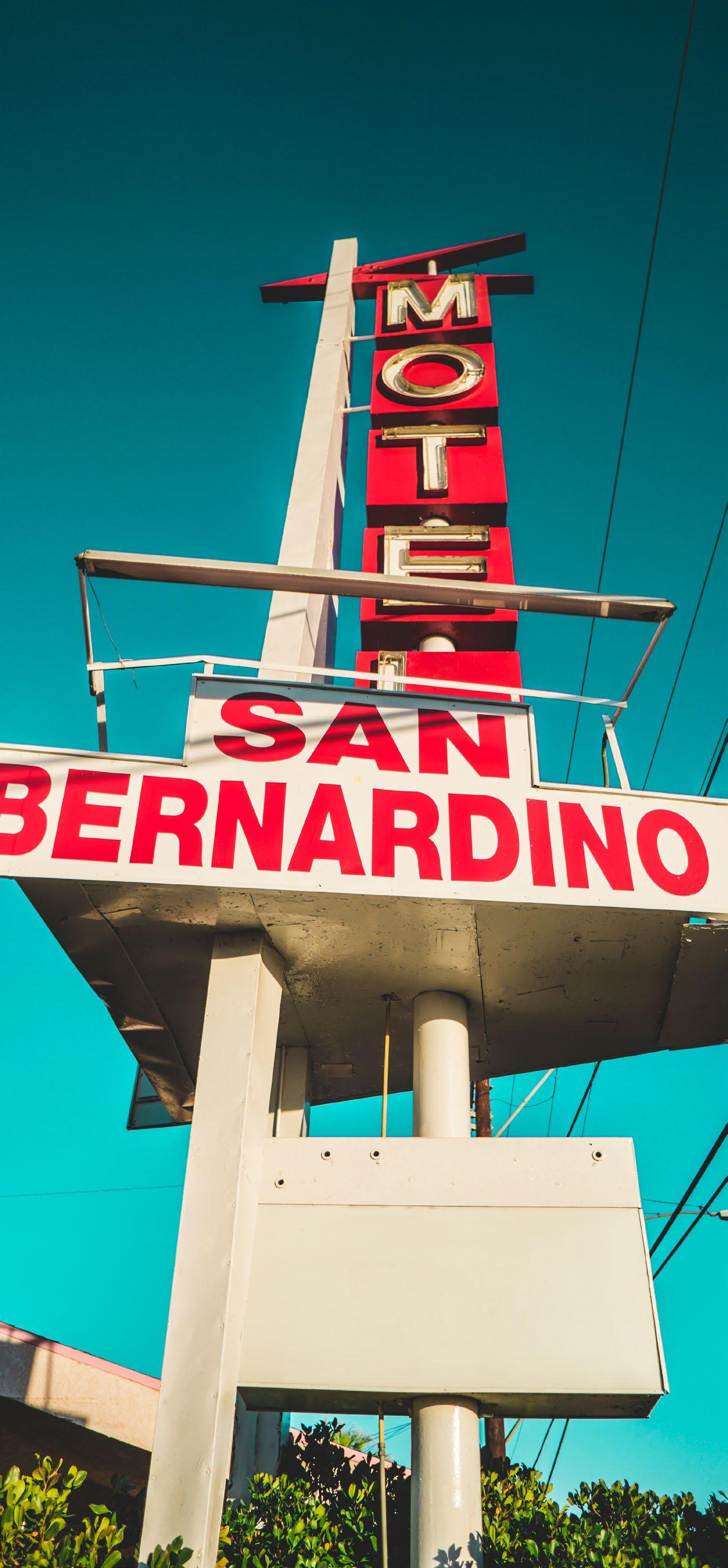
“
I think affordable housing could help adults in so many ways develop mentally and emotionally and become stable. I think it’s very important because it takes off a lot of stress from an individual. As a mother to have a stable environment to work every day and build that confidence you have that stability for your babies so that way we as parents can be good role models and feel stable. We can focus on how to bring our kids up and focus on our children’s education. If we’re stressed and stuff sometimes it can be hard to even focus on those important things for children.”
As a parent, Beatriz Loera became involved in community organizing to support the education of her children and defend the rights of working families in San Bernardino.
Loera helps support a Local Organizing Committee (LOC) of parents in San Bernardino that have been supporting low-income families during the coronavirus pandemic with Know Your Rights (KYR) information related to civil liberties and housing rights, as well as providing masks, food and hand sanitizers to households.
Nutrition and resources are a priority for many families currently, says Loera, who empathizes with mothers who are struggling to feed their children.
“It’s worrying for me to see the needs of families living in San Bernardino,” says Loera.
Loera believes that the rapid response support ICUC is providing families during this difficult period is “leadership through example.” She says more parents are more determined to work with important stakeholders and leaders to bring economic and social change for San Bernardino families.
“This little bit of help is not only proof that they can count on our support during these hard times, but also an indication that they can directly make a
difference
in their community. The power is within them to make that change.”
“
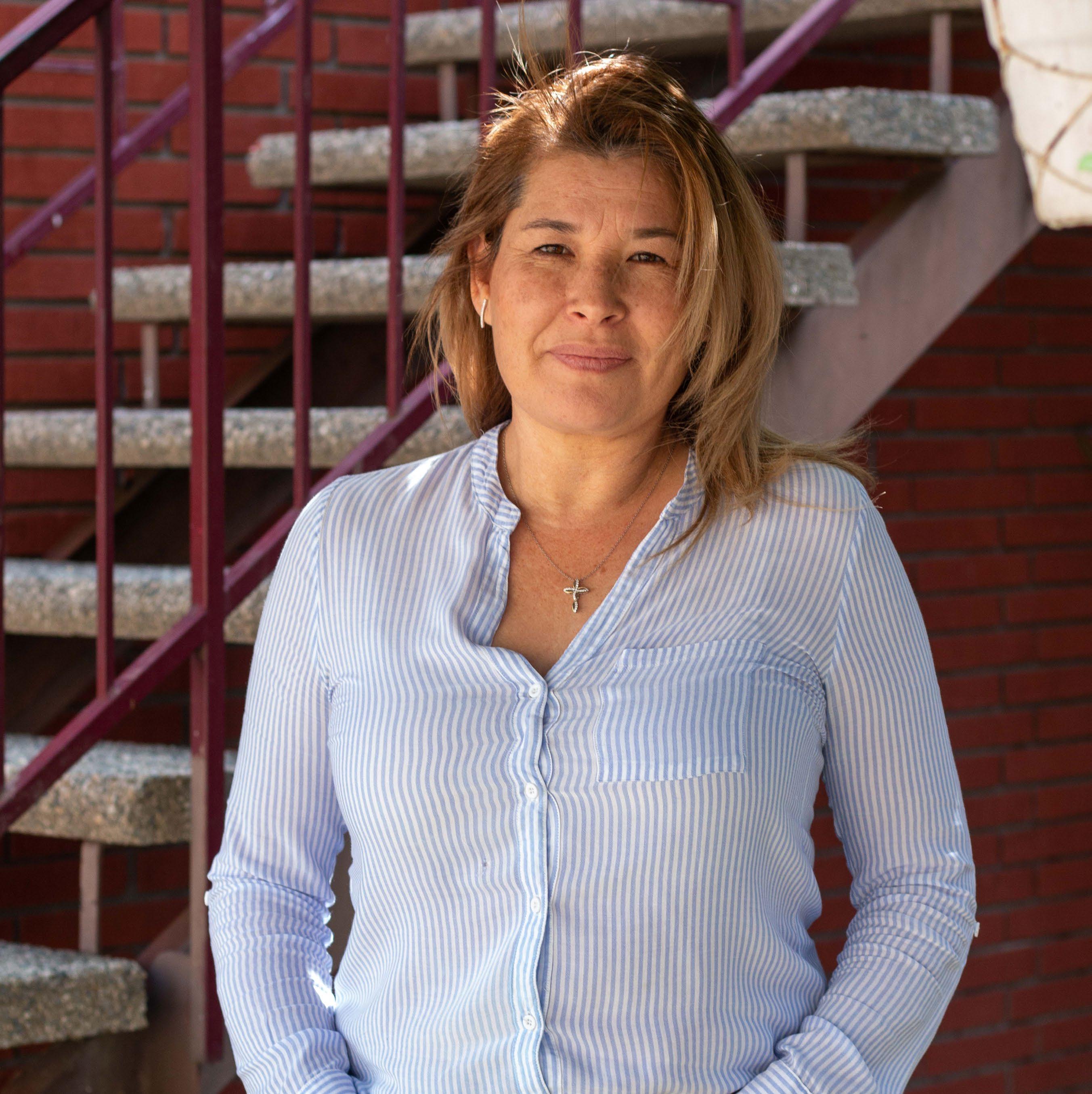
While many FII are encouraged to be honest about their criminal histories, honesty often continues the cycles of homelessness and hopelessness that they experience. One resident explained, “As a former parolee, I just feel that they tell you before you get out to be honest when it comes down to any job applications or any type of paperwork because it can come back on you. At the same time when you are honest you don’t want someone to turn that honesty against you when you need a house to stay in, and you need somewhere to lay your head you know, so you don’t want that to backfire on you. And being a parolee, people are going to judge, you can’t stop them from judging, it’s me, I have to take that step to prove them wrong.”
Another community member noted the importance of having access to affordable housing as a mother post-incarceration. They explained, “Affordable housing means everything to me, especially coming from incarceration for over 10 years, so it’s like the job outlook for me is not very broad and is very slim. I can’t be picky, because I got to accept anything that is offered to me at this time you know, so if I have to worry about how much rent is that’s just more stress on me. So I would say that it [affordable housing] means a lot because then that’s one thing, one stressor, I don’t have to worry about. I can focus on getting my sobriety right, getting myself back to where I need to be, where I can take care of myself and my daughter who is 17.”
Among the different challenges to finding affordable housing, some FII participants
highlighted the mental and physical tolls of not having housing. Many experience feelings of stress, being forced to live in insecure places and having to take anything available even if it is not a safe place. For example, one resident explained, “I think affordable housing could help adults in so many ways develop mentally and emotionally and become stable. I think it’s very important because it takes off a lot of stress from an individual. As a mother to have a stable environment to work every day and build that confidence you have that stability for your babies so that way we as parents can be good role models and feel stable. We can focus on how to bring our kids up and focus on our children’s education. If we’re stressed and stuff sometimes it can be hard to even focus on those important things for children.”
Looking at figure 2, numbers reveal the majority of our community members believe that once people have served their sentence for a prior conviction, they should have the same opportunities for housing, jobs, and schools as everyone else.
If we are going to see a community that prioritizes equal housing opportunities for all community members we must start with making more housing affordable and available to formerly incarcerated individuals. Individuals returning home from incarceration are parents, primary caregivers, children, and are looking to take care of their families. Families need access to housing that is affordable and does not disqualify them due to their past. Specifically, we need to set-aside funding that prioritizes FII and is based on their income.
Some of the fights and wins we have taken on in terms of statewide policy initiatives include San Bernardino passing one of the state’s first COVID Eviction and Displacement moratoriums to provide the basic protection from eviction for families who contracted COVID-19, and fell behind on rent as a result. We then followed up with legislative pushes that resulted in the creation of an Emergency Rental Assistance Program which allocated funding to further support those families who had to deal with other costs after such an illness, or the loss of income providers in their households. However, the reality is that this isn’t enough. These are protections and services that should have existed long before the pandemic and the loss of life. COVID proved to us that the difference between being homeless or not could be less than the two weeks off from work needed to fight the COVID virus.
Recently, a 44 Acre downtown redevelopment project was announced in San Bernardino in the midst of COVID. This announcement has resulted in a drastic upward shift in property values and created a perfect storm for property speculation in the area. This has further exposed the flaws of our housing market and the poverty cycle that holds many of our community members hostage.


It will take a long time to get the economic capital needed to truly address this issue in a way that prioritizes our community individuals, their health, and their wellbeing. This holds true for our local economies, as funding invested in affordable housing pays off tenfold by leveraging public and private resources to generate income, including resident earnings and additional local tax revenue, which in turn supports job creation and retention (nlhic.org). The solutions for these issues begin with the creation of powerfully organized constituencies and political champions and their ability to make changes in policy, and financial decisions where our community members’ voices are echoed and valued over economic profits for the already wealthy.
We propose a multi-pronged housing strategy to address the housing crisis and the way it affects different people at different income levels.
This includes funding for homeless shelters, transitional housing, support services, affordable housing development, policies that allow for the creation of alternative housing models, supporting more types of housing cooperatives, Community Land Trusts, accessible home buyer education, stricter taxes on vacant lot speculation owners, and policies that enable FII to have access to affordable housing.
We support the expansion of affordable housing in major developments such as the Carousel Mall redevelopment in downtown San Bernardino, a site that could be transformative to the city and its housing development.
We are opposed to criminalizing homelessness, including use of policing to harass people and evict residents from their homes.
The city has opportunities to build and expand affordable housing but has not taken full advantage. The city must prioritize accessing state level funding that exists to build housing and support the houseless.
Since 1980, the majority of new prisons built to accommodate the expanding U.S. prison population have been placed in non-metropolitan areas, like San Bernardino county. Within the county, the incarceration rate has increased by 770% going from 798 inmates yearly to 6,944 inmates annually.8 The rapid prison and jail expansion between 1990 and 2012, were touted by policy makers as viable solutions to economic growth as well as public safety.
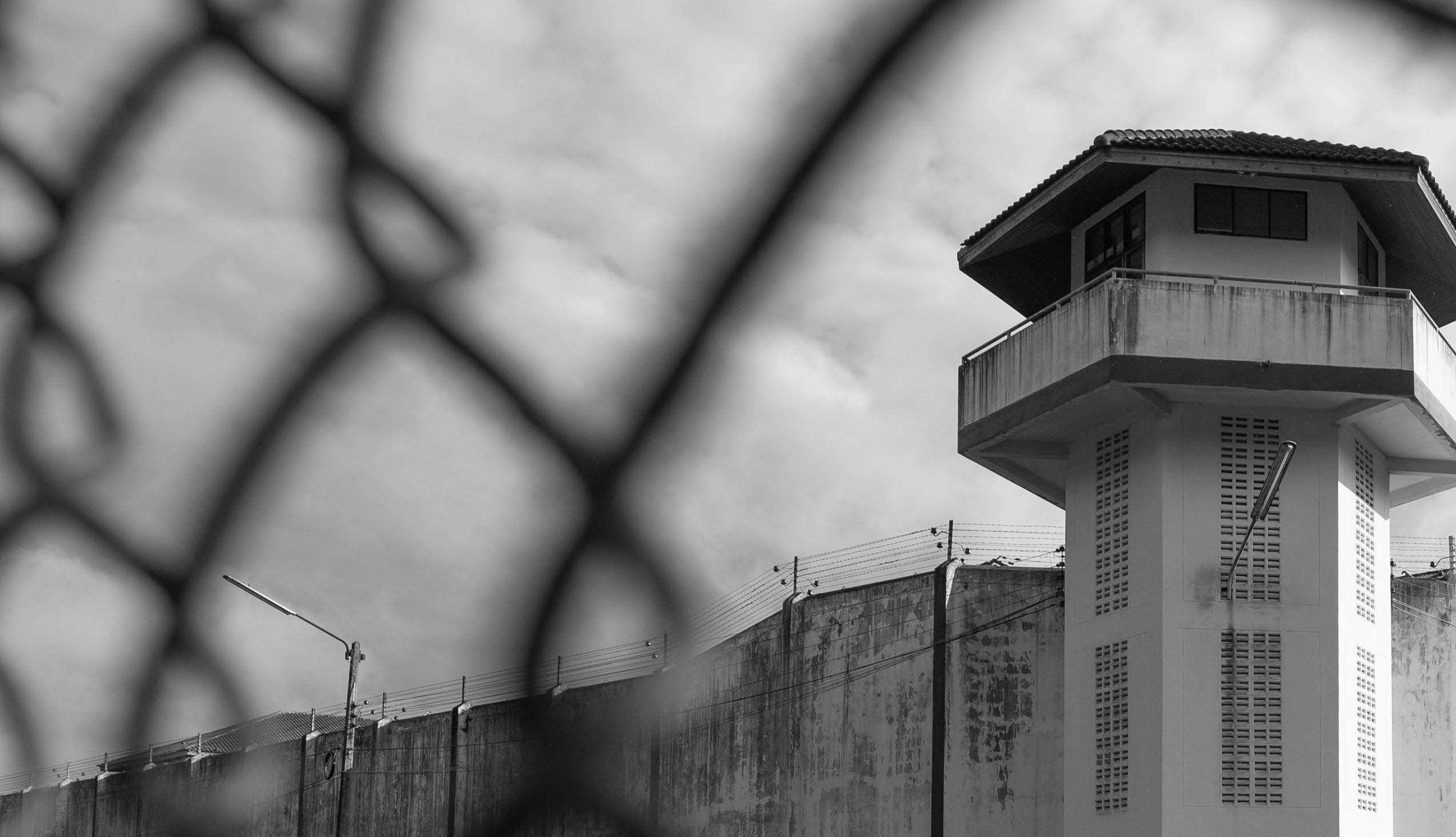

Among the 4,223 respondents polled for this report, the majority strongly believed that there are more effective alternatives to jail and prison
After serving 22 years in prison, Kenneth Hill was paroled to San Bernardino and had his first fair chance opportunity as a part-time seasonal employee with COPE, a community organization that develops the capacity of leaders to advance racial and social justice. From that moment, Kenneth was eager to get more involved with the organization as a member. As a phone banker, he exceeded his productivity goals and also recruited 4 other formerly incarcerated people. He demonstrated his own leadership skills as he coached and supported the teams and participated in the organization’s policy advocacy work. In 2020, the program was downsized because of the pandemic and only those with strong proficiency in technology and capability to work remotely with little supervision were retained. Unfortunately, Ken was laid off along with many others. He expressed how he wanted to continue working with COPE, “but it was hard to do that without having enough time to be trained well enough to work without support. And living in a transitional home made it even more difficult to assume work from home.” Kenneth says, “I was upset that some people could keep working and I couldn’t because I didn’t have good computer skills. I needed to be prepared before I came home.” Kenneth eventually found work in local warehouses. Now caring for his elderly mother, he has maintained work and is also enrolled in courses to be a certified Heating, Ventilation and Air Conditioning Technician.
“

There is a misconception that prisons bring more jobs to the communities where they reside. This is untrue for many reasons. First, many local residents in towns where prisons are located are often not eligible for those jobs for various reasons including their own criminal background. Secondly, there were no local hire/project construction labor requirements to create jobs for local residents in San Bernardino. Lastly, prison construction in the region has been followed by the construction of big box stores that flood the market with low paying jobs and drive out small businesses.”
For San Bernardino policy makers, the focus on mass incarceration and prison expansion has also failed on the promise of public safety. With an over-investment in the business of punishment and under-investment in job and life skills for youth and adults, residents are denied the safety and security that is possible when people work and thrive in their community. Among the 4,223 respondents polled for this report, the majority strongly believed that there are more effective alternatives to jail and prison. These findings further illuminate a misalignment of priorities and values between the people and the city’s political leaders.


A cycle of addiction and drug dealing resulted in multiple arrests and incarceration for Nache’t. Growing up with a strong Christian upbringing she says, “I would bring Jesus to prison and sing to the inmates and even sang at the request of the prison guards.” She attributes her faith to her mother, and says, “I thank God for my mother whom I could come to whenever I needed help.” When she finally entered a rehabilitation home, her mother stepped in to care for Nache’t’s older children during her recovery. In 2005, she entered Gibson House for Women in San Bernardino, a transitional home for women who have been incarcerated. She spent 2-months sobering up and making peace with herself and others through forgiveness letters that helped her heal from anger, abuse, and rape.
After some time as a member of C.O.P.E., Nache’t was hired on as an Outreach Worker. This gave her an opportunity to learn more about the importance of health in her community by engaging with various programs with Medi-Cal, Loma Linda University and other groups working to provide health benefits for working class people. In 2019, Nache’t completed Loma Linda University’s Promotores Academy where she was trained as a health educator which launched her career in community services. Nache’t is now gainfully employed in a long-term career with the San Bernardino City Unified School District as health educator and is able to continue making a positive impact in her community through her work.
I thank God for my mother whom I could come to whenever I needed help.”
“

Of those polled, 1,190 reported that either themselves or a loved one had experienced incarceration. By and large, these respondents believe that, after serving their sentences, formerly incarcerated people should have the same opportunities for housing, jobs and schools as those without criminal records. On the question of improving conditions for people who have been impacted by the prison-system, 97% of respondents believed that formerly incarcerated people must have stable employment. However, the stigma associated with having a criminal record is one of the main barriers to formerly incarcerated people finding sustainable employment.

When reintegrating, formerly incarcerated people are more likely to experience discrimination based on both their criminal record and their race. In a focus group interview with 8 formerly incarcerated people of mixed ethnicity, education level and employment status, participants affirmed their experience with this discriminatory practice. For instance, one woman discussed how she (a mixedrace woman) and her partner (a Black man) both inquired about the same job openings within a particular company. She explained that she was provided with information on how to apply, while her partner was told there were no openings. She also talked about filling out job applications for her partner and choosing not to mark his race as Black, thinking that this might help him get hired. She says, “he would get hired but [employers] would knock him out because of his [criminal] background.” This is not an isolated incident.
Rather, this experience is a part of the common phenomenon of workplace discrimination for Black people returning home from incarceration.
While many employers say that they are willing to hire formerly incarcerated people, a report by the Prison Policy Initiative found that having a criminal record reduces employer callback rates for formerly incarcerated individuals by 50%.10 Another focus group participant discussed feeling frustrated by only getting temporary jobs that lasted “for one day or two days, but nothing steady.” This presents a common, but complex, dilemma in which gainful employment for formerly incarcerated individuals is a necessity, while access to full time and long-term work is difficult to secure.
William “Mark” Hope served a long-term sentence in prison before being released. After being released, the work began to find a job and continue reintegrating into his community. He recalls saying “man there are no jobs out here” but someone quickly reminded him that he can’t expect jobs to come to him instantly. He had to do the work to find them and he set out to do just that. However, as he searched, he learned that many jobs could only be accessed through the internet. He says, “there are tons of online databases where you can find work, but what seems simple to others, is difficult to someone who has spent over 20 years in prison.” Things such as creating an email account, registering for different databases, and sending electronic resumes and applications were difficult to navigate. Fortunately, Mark found a network of support from people who shared work opportunities through word of mouth and helped him apply for employment opportunities with felon friendly employers who allowed people with criminal records a fair chance to get hired. Many formerly incarcerated people search for employers that won’t judge their criminal history and will understand their specific needs, especially those to meet parole conditions. In Mark’s case, having a network of people who provided him with the knowledge of felon friendly employment opportunities made him confident to follow through. He was eventually hired and, because of his work ethic, fast tracked to the position of a “Lead Man” where he could make hiring recommendations. Under his lead, Mark has been able to make his employer see the value of fair chance opportunities.
There are tons of online databases where you can find work, but what seems simple to others, is difficult to someone who has spent over 20 years in prison.”


When some formerly incarcerated people do get hired it is often not for long-term quality jobs. When asked how they define a quality job, focus group participants responded in the following ways:
A quality job is more than a good salary”
It is a pleasant workplace with people and leadership that represent our lived experience”
Ability to go to work and not feel like it is job because I enjoy it so much”
A job that allows for flexibility to understand unforeseen life emergencies.”
Everybody doing their part, that’s a good job. Everyone has a shared understanding of how to support each other…and balances work assignments and responsibilities.”
A job that has management and HR who can understand your struggles on the outside… so when you walk in and say, I’m going through this today, you know, they kind of can work with you and have an understanding.”
A job that opens opportunities for everyone to be considered for promotions, based on merit and not based on favoritism.”
Meaningful work that makes a difference in the world.”
A job that gives a sense of pride.”
Recent policy wins focused on prison decarceration mean that more ex-prisoners will be returning to San Bernardino County in the near future. Gainful employment helps returning people create economic stability after release and reduces the likelihood that they return to prison. This in turn, promotes greater public safety and contributes to a strong regional economy which benefits everyone. The following recommendations are informed by the experiences of people returning from prison and should be adopted in the region’s workforce and economic growth strategy.

Support a work culture that fosters successful reintegration by:
Providing flexibility to meet mandatory conditions of parole and probation (i.e. drug treatment classes, visits from parole/probation officers, etc.)
Offering culturally appropriate training to help navigate the learning curve while reentering the workforce
Building a restorative work environment that provides training on corrective approaches that discourage the rush to fire as the first means of corrective action

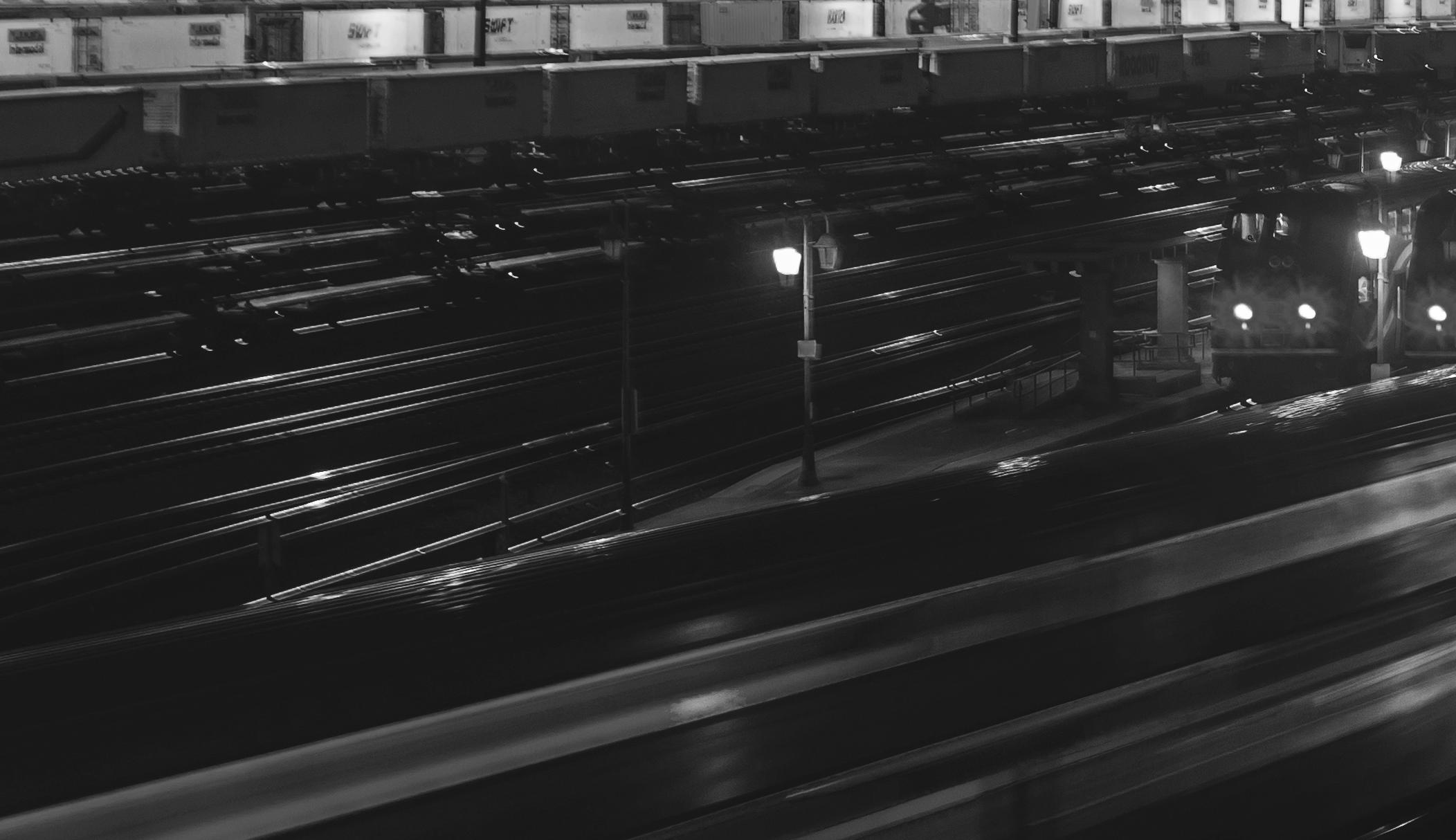
In recent decades, the Inland Empire region has become ground-zero for a startling growth in low-wage jobs, poor working conditions, and environmental degradation. Most of this growth has been led by five specific industries; health care, retail, food service, education, and the goodsmovement/logistics industries. While every one of these job categories are overrepresented in the Inland Empire, the fastest growing jobs segment lies in logistics and warehousing industries, which directly connect the Inland Empire to the Ports of Los Angeles. To better understand residents’ experiences and perceptions of the current labor market in San Bernardino, we surveyed 4223 residents about several of the most important issues that impact them. These issues included economic opportunities, health issues, jobs, and incarceration.
Only 16.4% of respondents indicated that their overall economic situation had improved. While 42% stated that their economic situation remained the same. Sadly, over a quarter (27.9%) of those included in the survey shared that they are economically worse off than they were three years ago.
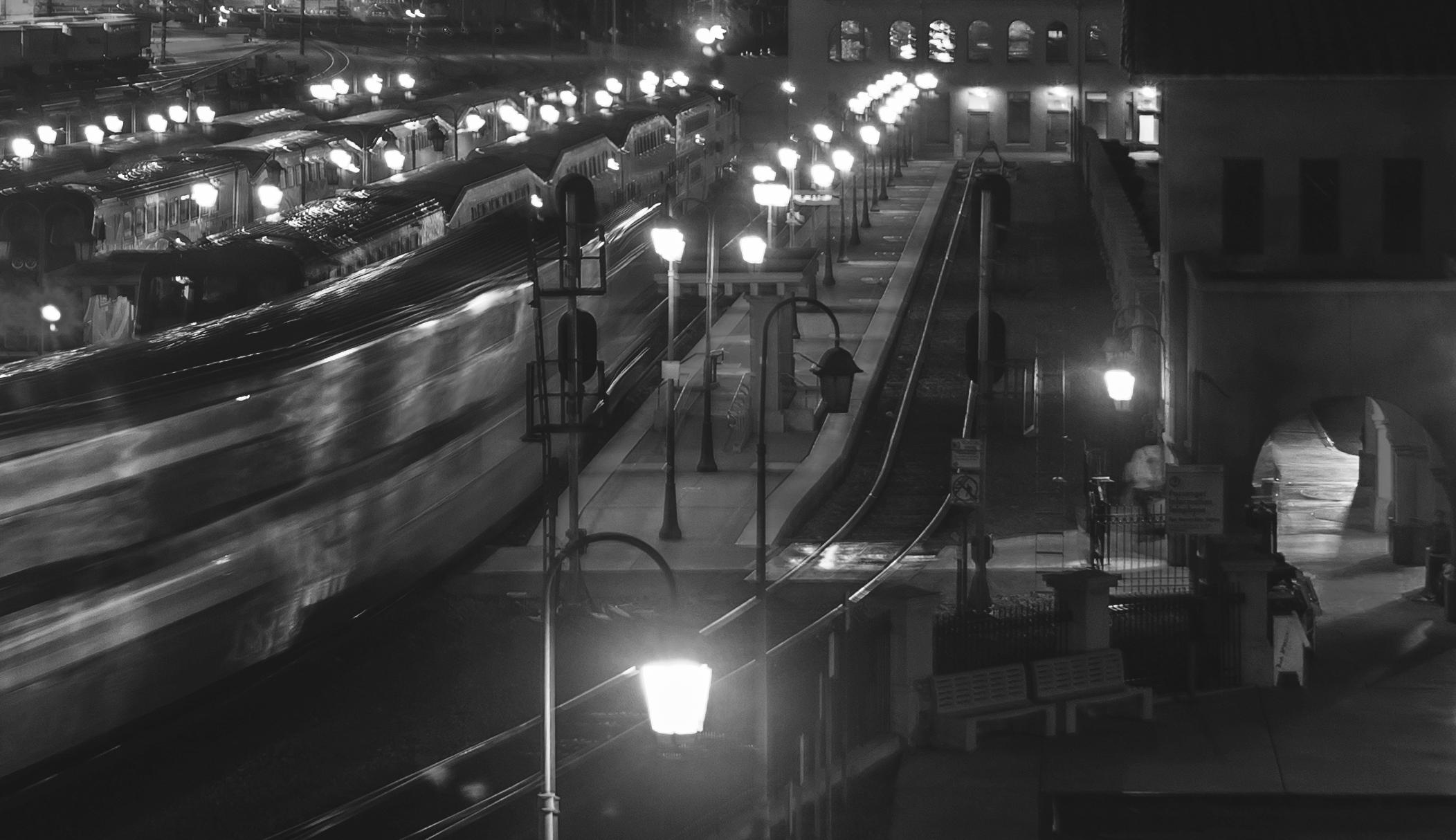
The Inland Empire Labor Council is comprised of more than 80 unions which represent more than 300,000 workers across the 27,269 square mile region spanning across both Riverside and San Bernardino counties. The struggles of most communities, from housing to political representation, are eventually dealt with at the employment level. Fair wages, jobs with benefits, and access to workforce development programs all present opportunities to ameliorate some of the harshest circumstances faced by residents of the Inland Empire.

We asked participants to consider their overall economic situation over the last three years and whether this situation had changed or not. Only 16.4% of respondents indicated that their overall economic situation had improved. While 42% stated that their economic situation remained the same. Sadly, over a quarter (27.9%) of those included in the survey shared that they are economically worse off than they were three years ago.
On the topic of work and employment, we asked participants to describe their present status in terms of being 1) employed full-time, 2) employed part-time, or 3) unemployed. In addition, we asked participants to identify the types of industries in which they work. A full 20% of participants stated that they are currently unemployed. This is a tremendously disheartening statistic considering that the overall unemployment rate throughout the state of California sits at 5.8%. Another 20% reported having part-time employment. Lastly, 36.6% stated that they were employed as full time workers. When asked to indicate the types of industries in which they worked, the most commonly reported industries were warehousing and logistics at 14.2%, education at 11%, and retail work at 9%. Importantly, this reflects the recent
trend of warehousing and logistics industries flooding the region with largely low-wage jobs with little job security and a greater risk of job related injury.
Despite the fact that research highlights an overall dearth of stable job opportunities in the region, we found that there is a strong spirit of entrepreneurship among residents. More than half of residents surveyed (60.5%) stated that they would start their own business if start-up funds were available. To us, this demonstrates the potential and overall commitment that residents have for participating as equal partners in the city’s long-term plans for economic recovery.
The City is in a position to be a leader in the creation of good, sustainable jobs, not only by concentrating on current employment needs, but also with having a vision for the future. Logistics remains a major component to the overall economic infrastructure of the region. However, innovative practices that can help move the industries to more sustainable and environmentally conscious modes will be imperative to create thriving communities in the region. Among the top concerns identified by community members who participated in our survey are the overall lack of opportunities for job skills development, apprenticeships, and availability of sustainable jobs that provide living wages. With this in mind, we make the following recommendations:

Investment in local entrepreneurship. As San Bernardino is exploring long-term strategies for the city’s development, plans should include small business incentives that both prioritize local entrepreneurs and local hiring.
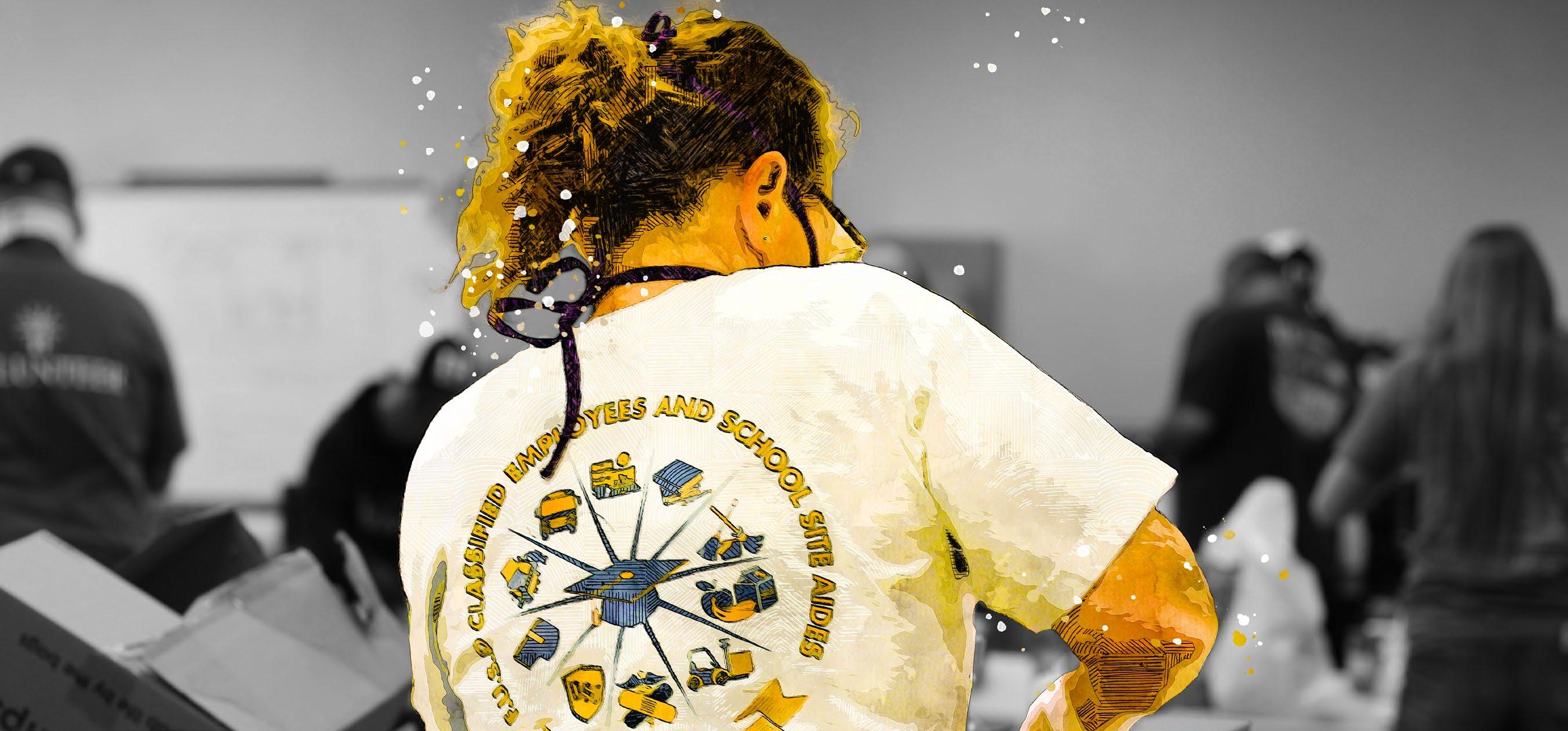
Encouragement of community benefits agreements to be put in place with developers vying for contracts within the city.
Increase the number of affordable housing units made available to community members. With the sharp rise in the cost of housing, displacement is a major concern and needs to be tackled concurrently with the city’s development.
San Bernardino’s most vulnerable and historically excluded populations need to be a central consideration. Justice-involved BIPOC workers and youth should be included in recruitment strategies in any and all plans for workforce development. This can be done with the close collaboration of local community-based organizations, including, but not limited to, those that comprise the Just SB collaborative.
Prepare for future jobs. Along with the growth in logistics comes an increased demand for automation. Investment in job training for the current labor market will likely be rendered obsolete in the next few years. As more of the industry sectors pivot toward automation, programs that transition workers who might otherwise face displacement need to be created and prioritized.
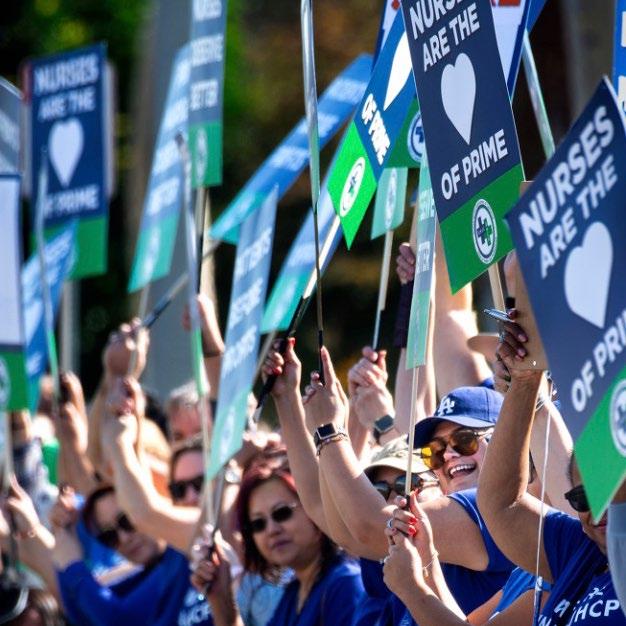

The question of job quality and economic opportunity is central to the People’s Plan for San Bernardino. For too long, the leadership has neglected the needs of the residents who live, work, or go to school in the city. Specifically, we have seen the unstructured growth of the goods movement sector (logistics and warehousing), which represents a group of employers that have tended not to provide a living wage. San Bernardino is a terminal for BNSF Railyard, Amazon air, and several trucking lines, making it an extremely valuable part of the goods movement sector which moves $500 billion in freight through the region every year.
San Bernardino is a terminal for BNSF Railyard, Amazon air and several trucking lines, making it an extremely valuable part of the goods movement sector that moves $500 billion in freight through the region every year. ”

Our analysis of the employment status of San Bernardino residents shows that 20% of the people we spoke to are unemployed.
Originally from New York, Raymond Blevins moved to San Bernardino 10 years ago to help support his family. As a chef, he worked at various restaurants in the area but found it difficult to keep a job when he became ill with congestive heart failure.
Unable to work, Blevins lost his apartment and became houseless. Blevins was eventually referred to the Department of Rehabilitation in San Bernardino County where they helped him get back into the workforce, find housing and get the support he needed. “They offered me free housing, help with resume building, work clothes and other supplies I might’ve needed on the job and even bus passes so I could get to work,” he said. “I was really grateful!”
His health affected his ability to keep up with the demand of the restaurant industry and so he began working at multiple warehouses, like Amazon. Blevins worked at an Amazon facility in San Bernardino which required heavy lifting, long periods of time on his feet and unrealistic quotas.
“There are jobs in San Bernardino right now but that doesn’t mean they’re good jobs,” Blevins said as he described his experience in the warehouses. “A good job is one that doesn’t pressure you so you don’t hurt yourself and one that pays well.”
At Amazon, Blevins often skipped lunch to keep up with the workload and said he felt guilty taking his full breaks. He was also promised overtime or holiday pay that he didn’t receive. “Warehouse workers need to make more,” Blevins said. “These facilities should compensate their staff with a livable wage, basic medical insurance coverage and other incentives like child care.”
Blevins now uses his experiences from the workforce in San Bernardino as a community leader to advocate for a Community Benefits Agreement. He also wishes to support the houseless community in the city who are often turned down for jobs sometimes just because they don’t have a physical home address. “Rents are high out here but folks are willing to work,” Blevins said.
In his efforts with Just SB, Blevins hopes to organize residents so they gain respect and are included in plans for future developments at the airport in San Bernardino. Blevins wants to ensure that the community has access to long-lasting jobs that offer training and opportunities for advancement.
There are jobs in San Bernardino right now but that doesn’t mean they’re good jobs,” Blevins said as he described his experience in the warehouses. “A good job is one that doesn’t pressure you so you don’t hurt yourself and one that pays well.”
“

The Just SB coalition surveyed 4223 people who live, work, or attend school in the city of San Bernardino. This survey asked basic questions about employment, wages and conditions as well as more detailed questions about what residents wanted from their local economy. In addition, the Just SB coalition and Warehouse Worker Resource Center also conducted two focus groups with San Bernardino residents in Fall 2021. The WWRC also held individual interviews with residents around the issues of economic growth and opportunity. These residents are members of the community who showed interest in specific issues and aspects of the local San Bernardino economy.
This section details the findings of the Just SB People’s Plan process related to the job quality and economic development opportunities of the city and region, including warehousing, one of the dominant sectors of the local economy.
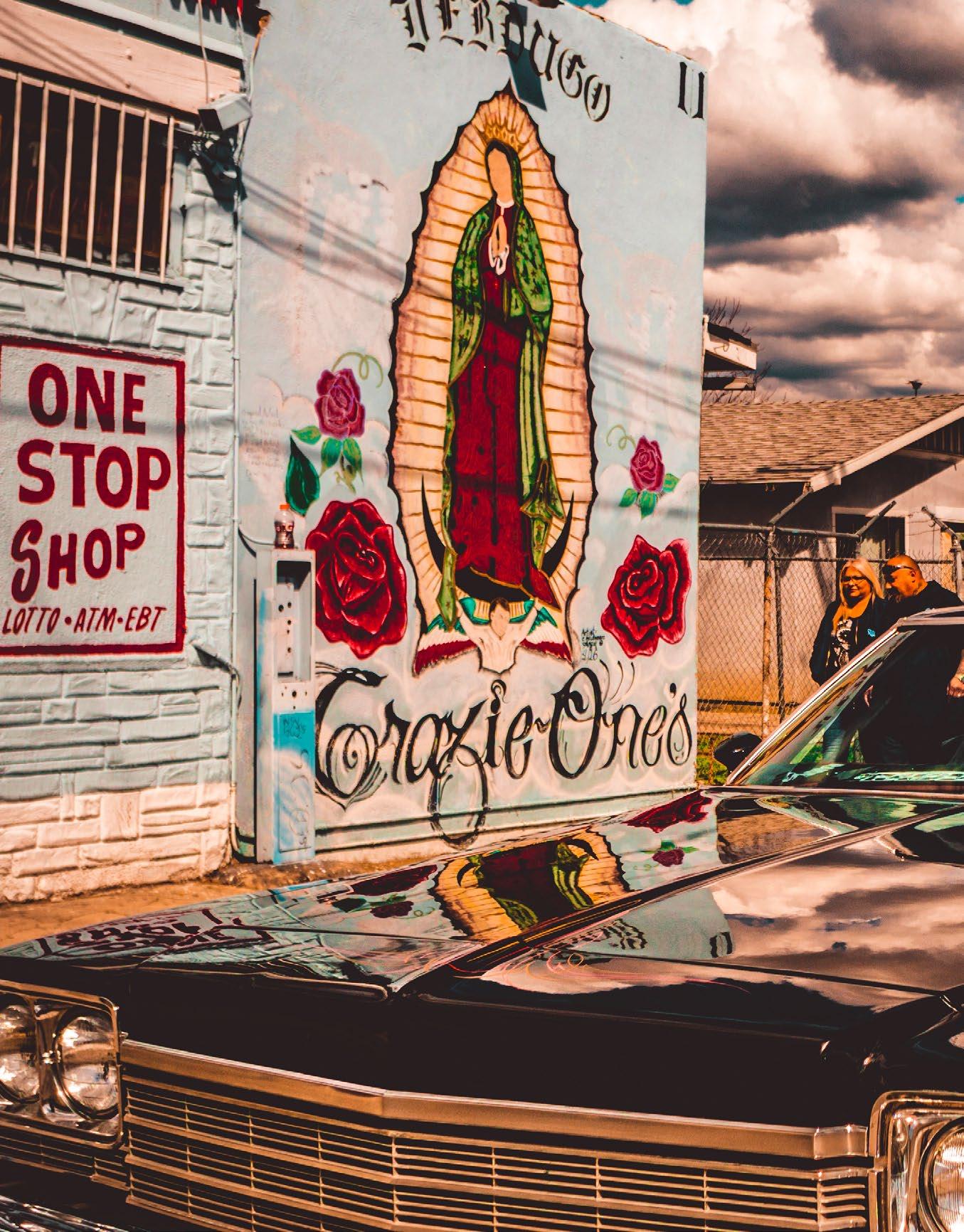

Our analysis of the employment status of San Bernardino residents shows that 20% of the people we spoke to are unemployed. This rate is highest among women and people of color. It’s consistent across age groups, with working-age people generally unemployed at a rate of 25%. People with lower rates of education tended to have higher rates of unemployment.
Related to the low quality of jobs is the lack of options for other kinds of employment in the region. Focus group participants noted that it is hard to find job opportunities in other sectors
of the economy. Related to this is a concern for people who have trouble finding employment for a variety of reasons. Other sections of this report detail aspects of this specific issue. For example, people with history related to the justice system (formerly incarcerated individuals) faced significant challenges finding opportunities for employment. Others faced limited choices due to hiring discrimination based on race, sex,

age and other factors. Together, these factors create significant barriers for people seeking employment.
Residents interviewed noted the lack of opportunities for people without higher education. The data from the larger community survey also affirms that the lack of higher education is a barrier to employment. People pointed to several potential solutions, including more job opportunities for people without higher education and more access to education and technical training for those who seek it. Such training programs would have to fit into the needs of people who require job placement support and other employment services. One resident linked the lack of employment opportunity to negative impacts in the community. This resident, who works in a warehouse in the region, stated that “there is a lot of crime in the city, drugs and homelessness due to the lack of good jobs that pay a liveable wage and provide benefits.” This resident received no vacation time, no health insurance, or any other employer provided benefits. ”If I don’t work, I don’t make any money.”
The warehousing and logistics sector, which according to the state employment development department pays an average of $19.67 per hour in the Riverside-San Bernardino Metropolitan Statistical Region, is the largest sector among people interviewed.



“
Another related area is housing. The minimum wage in California for an employer with more than 26 employees is now $15/hr. However, the cost of living, including housing in the region, is quickly rising. One interviewee explained that “it takes at least $25 an hour to be able to have the basics in San Bernardino; lights, rent and food are all increasing and it is continuously getting harder to be able to afford rent.”

The findings of these interviews and focus groups added nuance and detail to the issues that were raised by survey respondents. Workers who had been employed in the warehouse sector noted that while it is the easiest place to find employment, it is also a site of potential exploitation and job insecurity. Workers noted that some warehouses don’t pay overtime as required by law. This issue has also been documented in wage claims and litigation within the region in recent years. Other workers discussed facing discrimination related to gender and race. And others noted the dangerous conditions for workers. A resident who is in her 50s noted that she worries about getting injured while on the job at a warehouse.

A key part of economic opportunity for our city is the ability to start and grow business. This is rooted in access to capital first and foremost. The City of San Bernardino has historically faced issues like redlining and other racially based economic sanctions, which have kept residents from starting businesses.

The survey findings show that there is a strong entrepreneurial interest in the city. 62% of those surveyed said that they would start up businesses if they could. This number is even more striking if we consider the number of vacant storefronts in San Bernardino. While state and federal programs like “Enterprise Zones” and tax credits claim to focus on communities like San Bernardino, we have seen very limited investment from those programs in the city, indicating a serious gap between the intent and the impact of these programs.
In the interviews we conducted, we heard from residents who stated that they would take advantage of both access to capital and technical assistance to start and grow their businesses if such opportunities were readily available in San Bernardino. One resident interviewed, Viet, explained that they used to run a donut shop in the City. When Norton Air Force Base closed and the city’s economy contracted, Viet’s business declined and eventually closed. His family now depends on warehouse and fast food jobs, which pay minimum wage. Viet thinks that more needs to be done by the city to provide opportunities for local residents to start a business. He says there is a need for financial literacy and access to capital for those locally who want to become small business owners.

62% of those surveyed said that they would start up businesses if they could.
The City’s economy requires a new approach to economic development. We suggest that the city should approach this through the following strategies:
Currently, the city is engaged in a once-in-a-generation revision of its general plan as well as specific area plans. This includes a review of land use, housing opportunities and economic development for the entire city. The city needs to ensure the principles of inclusion and economic opportunity are centered in the process, and that longtime Black, Latino and Indigenous communities are protected from potential displacement.
Other chapters of this report detail the need for more opportunities for people who have historically been excluded from the economy including formerly incarcerated people. Several of the interviewees and focus group participants raised the need for economic opportunities as the way to comprehensively address the issues of crime and homelessness in the city. We see these relationships across issues as key to a comprehensive approach to the related and complex problems in the city.
While goods movement is, and will continue to be, a major part of the city’s economic development, there is a need for a variety of opportunities for San Bernardino residents who want to work in the city where they live. A strategy for working class jobs that provide a living wage would involve partnering with local universities and colleges, union apprenticeship programs and job training programs. Programs for local residents, through either the city or community based organizations, should prioritize low income residents who want but cannot find employment, including those with barriers to employment related to their past experiences with the justice system.
The sectors of the economy that have been growing include goods movement and health care. These two sectors have highly diverse working conditions ranging from minimum wage temporary jobs, to unionized blue collar employment, as well as highly technical jobs requiring high levels of education. The City should work with labor and workforce development partners to develop strategies to upskill and train workers in these industries in order to raise the standard of living for those at the lowest levels. The city should provide career paths for workers in this sector, as well as mid career training programs that help workers move up to higher paying technical positions in their sectors. The logistics and health care sectors are examples of greatly profitable sectors with major employers that can and should set standards for good wages and working conditions.
Given the massive amount of interest in entrepreneurship in the City of San Bernardino, supporting residents’ desires to start their own businesses would create new economic engines that are rooted in San Bernardino rather than in investments from beyond the region. The City should establish and increase entrepreneurship training for residents. Programs that currently exist should be expanded and focused on sectors critical to growing middle class opportunities in the city. The new CSUSB School of Entrepreneurship and its related Small Business Development Center represents a great opportunity to build cohorts of businesses rooted in local innovation.
The key question for people interested in starting a business is; how to access capital? The existing systems through the Small Business Administration (SBA) are limited and require significant amounts of capital. Programs like the Community Reinvestment Coalition’s Community Benefits Plans in partnership with major banks in California, designed to address the decades of disinvestment in cities like San Bernardino, represent the kind of opportunity that the City should be facilitating for its local entrepreneurs.
The complex issues addressed by the People’s Plan all affect youth and young adults in specific ways. People who are working to establish themselves economically in our communities are given difficult choices about how to support themselves and their families because of the economic problems in San Bernardino.
Youth Action Project (YAP) assists youth and young adults who are facing barriers to employment and academic opportunities. Our target population ranges in age from 14 to 24 years-old and includes high school, college, and university students / recent graduates, justice-involved youth and opportunity youth between the ages of 16-24 that are neither enrolled in school or employed.


Of survey participants say their household’s economic situation has gotten worse over the last 3 years.
Ulises Pineda became involved with YAP as a student due to his frustration with the workforce, his family being evicted from their homes, and his struggle to support his mother and sister as the primary income earner. Ulises was one of San Bernardino’s top high school graduates in 2019. He attended college but dropped out to support his family. Ulises has experience working in warehousing and logistics. He volunteers with Youth Action Project (YAP), primarily through YAP’s new Young Leaders Incorporated program (YLINC), where residents learn about entrepreneurship, civic engagement, credit repair, starting a business, life skills, building a resume, and investing in their communities.
Having seen how the economy and cost of living have affected his family, he volunteers to support community functions that assist families and students in finding work and housing and health disparities.
Ulises was ecstatic when he learned that we were putting together a table that would include the voices of the community in discussions about workforce and community development.
“We need more platforms where people living in the IE, especially young people, can have a voice because it often feels like no one cares.”
Ulises came to our Learning Sessions and asked many pertinent questions: a. formalized “How come these jobs don’t pay enough to help make ends meet? I have to work two jobs and feel like I haven’t even scratched the surface in order to support my mother and sister.” b. “Rent is hella expensive, and finding a place to live in the IE is becoming extremely difficult; how do we even begin
to address this issue?” c. “What am I supposed to tell my younger sister, who looks up to me, about her future?”
Ulises believes that supporting programs like Youth Action Project will help the community become more informed and empowered about resources available to them and their families. He has seen firsthand how we assisted a few of his friends in obtaining employment through YAP’s WIOA program, starting a business, and obtaining housing vouchers through our partnerships.
Rent is hella expensive, and finding a place to live in the IE is becoming extremely difficult...What am I supposed to tell my younger sister, who looks up to me, about her future?”
“

The lack of transportation, a lack of affordable housing, the high costs of certification and licensing programs, poor treatment by employers, and unsafe working environments, are just a few of the barriers faced by the people we serve. These issues are frequently made worse by issues such as lack of a steady income, unstable living arrangements, and a lack of post-secondary education. The group we identified and worked with for this research consisted primarily of those identifying as Latinx and African-Americans, with a smaller group of participants identifying as White. The ages of the participants ranged from 17 to forty, and their household income at time of participation was less than $50,000. One hundred percent of those who took part lived in San Bernardino.
YAP advocates for policies that improve economic opportunities through workforce development, youth development, and academic achievement. For over two decades, Youth Action Project has provided transformative experiences, professional development training, career coaching, and paid work experience to youth and young adults, allowing them to discover their passion and develop marketable skills for the workforce. This section will highlight some of the key findings from the Just SB collaborative research project. These findings indicate that we are still a long way from having an equitable and accessible workforce for our youth and young adults in San Bernardino. In the last section, we offer several recommendations in support of the development of affordable credential programs and the accessibility of career pathway opportunities based on partnerships between local employers, institutions of higher education, and communitybased organizations.

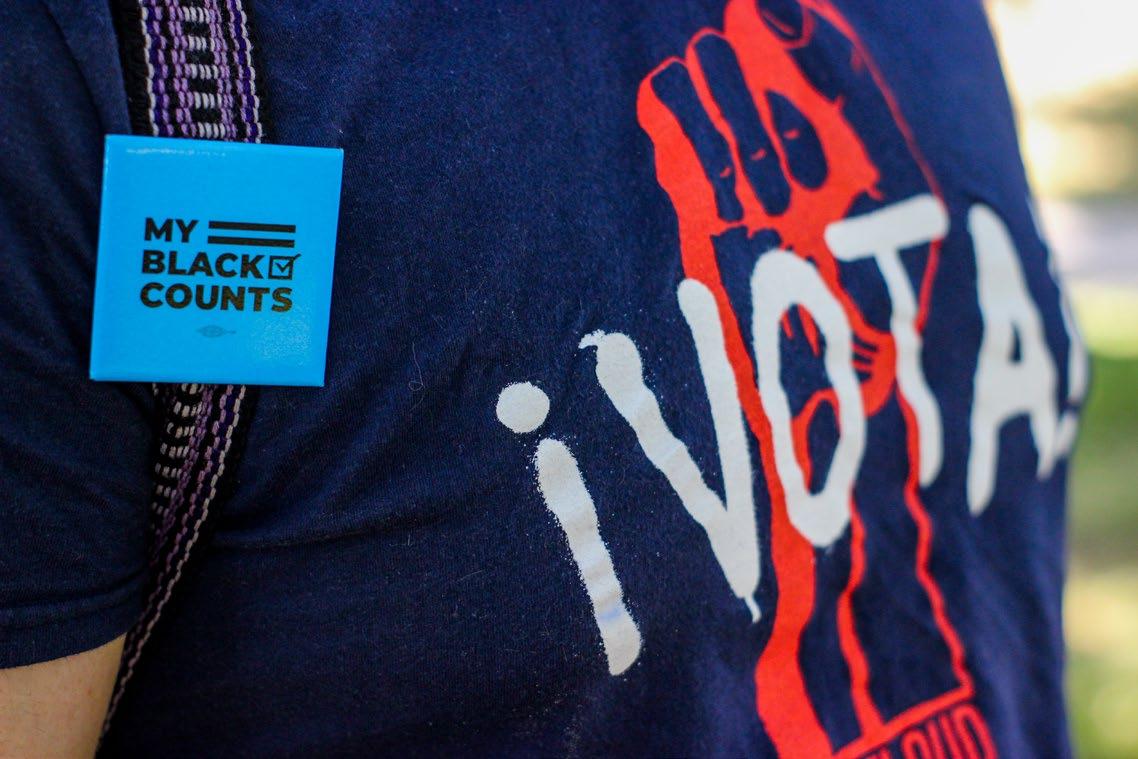

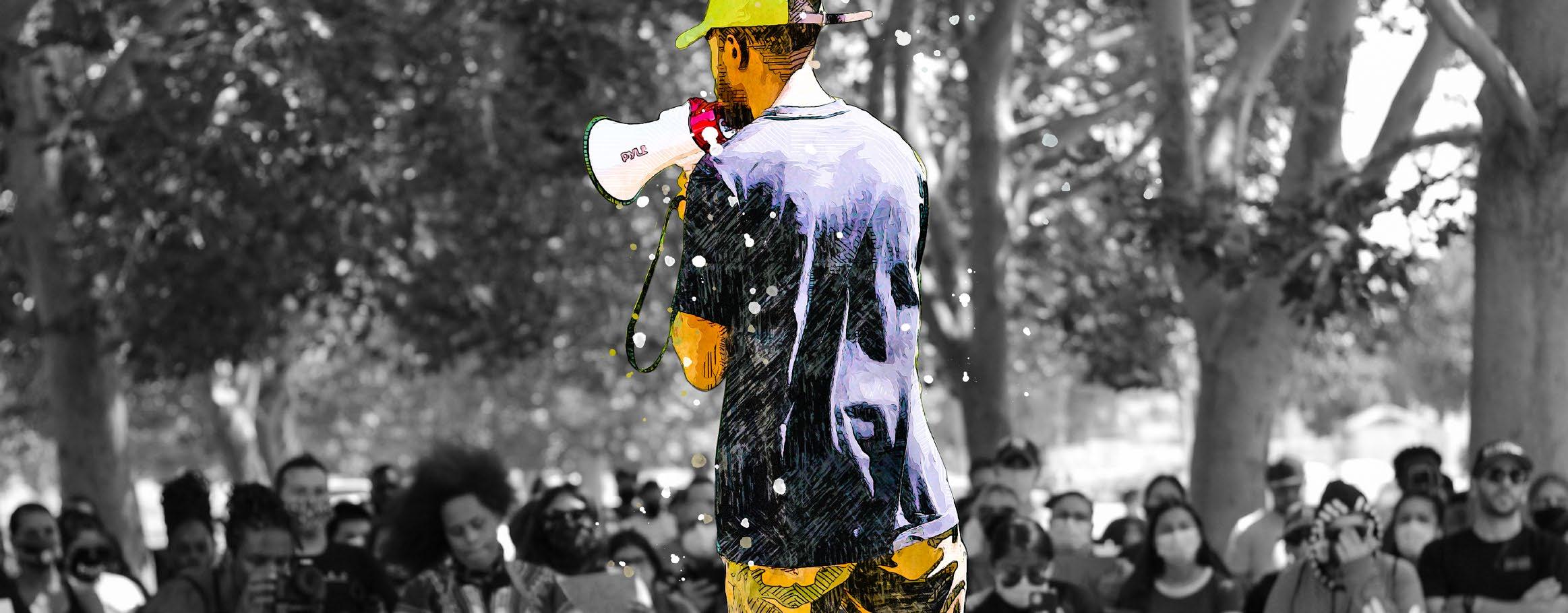
To gather survey responses, YAP collaborated with college students, community members, and influencers. Our process included weekly strategy meetings to review survey collection metrics and adjust our outreach strategy as needed. The geographic regions canvassed included local colleges, supermarkets, gas stations, shopping centers, and unincorporated regions with limited transportation, such as the community of Muscoy in San Bernardino County. Additionally, YAP attended multiple community events where large volumes of survey respondents could be targeted. YAP assisted in the development of several survey questions pertaining to workforce, higher-ed, access, and income. The following is a summary of key findings:
In response to question 18 of the survey, “What is your highest level of education”, the majority of individuals surveyed stated that they lacked
post-secondary degrees that might open doors to careers with sustainable incomes. One respondent explained that, “I dropped out of Valley College because I needed a job.” Our survey also found that, as the cost of living in our communities increases, the majority of residents do not have the financial means to remain in their communities long-term.
In response to our question about yearly income, the vast majority of survey respondents stated that they earned less than $50,000 annually. And, in response to our question on whether or not their household incomes had changed over the last three years, the majority of our participants stated that their households did not see a significant increase in income. In fact, many saw their economic situation deteriorate over the most recent three years.
Youth Action Project conducted multiple focus groups at various community locations and worked in collaboration with our partners for the greatest reach and accessibility.

Many participants reported feeling energized, while others communicated nervousness about their participation. There were several emotional moments during the focus groups, as participants allowed for a level of vulnerability as a result of their candid responses. It is important to mention that the vast majority of our participants stated that they had never been asked the types of questions included in our focus groups before, nor had they ever been invited to participate in the creation of a local plan for their communities. Overall, respondents stated that they had a positive experience and expressed a desire for more opportunities to include community voices in regional planning.
“One of the issues that most families find important is tied to the employment challenges and opportunities. San Bernardino is no different, and one of the things we know in order for us to continue to thrive and grow as a community, we need strong employment opportunities here. So, we would like to know from you the residents of the San Bernardino community.”

Question 1 of our focus groups asked, “In your opinion, what are some of the biggest challenges to getting quality employment in San Bernardino and what are some areas of employment opportunities you have seen or experienced in San Bernardino?”
One self-identified Latino participant explained to the group that, “I gotta have two jobs to support my livelihood right. I support a family of three so one job isn’t enough, not on 10 hours, so I gotta get another job. Honestly, health wise it’s really bad because, for my example, that pressure for me being on top of my work drove me to depression.”
Another participant, also a self-identified Latino, added, “When I was working in the warehouses it was really hard to break the cycle out of that career. Once you have warehouse under your name it’s hard to move into a different part. It’s an abusive cycle.”
With regards to her experience, a self-identified Black woman told the group that, “I grew up in San Bernardino but you best believe I was going to make my way out of San Bernardino. I didn’t see any example of what success look like to me.”
Lastly, a self-identified Latina explained to the group that “I purposefully look for work somewhere else just because I don’t feel safe here (San Bernardino) sometimes.”
Question 2 asked the group, “In what ways does the education system or local educational opportunities support (or limit) San Bernardino residents in their efforts to improve their economic situation, move up in their jobs or careers, and have a better quality of life?”
A self-identified Black female in the group explained, “No one sat me down when I was in high school. I had to literally do the research myself…if we don’t have the examples, the mentors, it definitely sets you back.”
A self-identified Latina participant shared her experience and stated that, “students are always tired, always exhausted trying to get AP classes, it was the workload and they were expected to get good grades. They can’t even take time for themselves… eventually you can’t sustain that.”
A self-identified Latino participant shared his opinion; “I believe the curriculum is due for a change.”

Tanisha Bradley became involved in community work as a parent by volunteering with Youth Action Project’s project program Young Leaders Incorporated (YLINC) to provide resources for parents with children in the school district.
Tanisha was homeless at the time, sleeping in her car with her children. Through some of our relationships, we were able to assist her in obtaining housing and connecting her with employment opportunities. We assisted Ms. Bradley in starting her business, and she now works with the school district to assist parents who have children who struggle academically.
“People don’t realize how difficult it is to survive when you have three children to feed and are on your own. My family members could not help me because they were struggling themselves.”
Tanisha jumped right in when she heard about us forming a table to support the community’s voices. She came to our Learning Sessions and directed parents and students to our surveys and focus groups.
“This is powerful. You know where I had to start and what it means to me to be a part of this; words cannot express how much this means to me.”
Tanisha believes that there must be systems in place to better support single mothers. She believes that these systems must include affordable daycare so that parents can work or look for work, higher-paying jobs, and opportunities for parents to advance in their careers. “The struggle is real. More programs like YAP, which helped me get back on my feet, are needed. That’s why I decided to start my own business to help other parents like me.”
“The struggle is real. More programs like YAP, which helped me get back on my feet, are needed. That’s why I decided to start my own business to help other parents like me.”
“


These surveys and focus groups have assisted us in imagining policies that promote equity, accessibility, and long-term sustainability. Using the findings of this research, we were able to identify access to better transportation for our participants as a key recommendation. It was also clear that we need to modernize our 211 information services with applications and simple navigational tools, as well as workshops to teach individuals how to browse the resources and apply for jobs.
Another policy or programmatic recommendation that we see as an opportunity to improve an accessible workforce with equitable and inclusive practices is a cohesive and responsive partnership with industry, small businesses, schools, and non-profits that would help increase communication between sectors and build a more comprehensive model to better bridge the opportunity gap for our marginalized communities.
Our youth and young adults should not have to be the primary breadwinners for their families, working multiple jobs to make ends meet. Our youth should not have to relocate for better opportunities.
In conclusion, to better prepare our communities for better job and career opportunities, YAP is redesigning an internal workforce curriculum. YAP has been developing new partnerships to help provide transformative experiences for youth and young adults, as well as professional development training, career coaching, and paid work experience, allowing youth and young adults to discover their passions and develop marketable skills for the workforce.
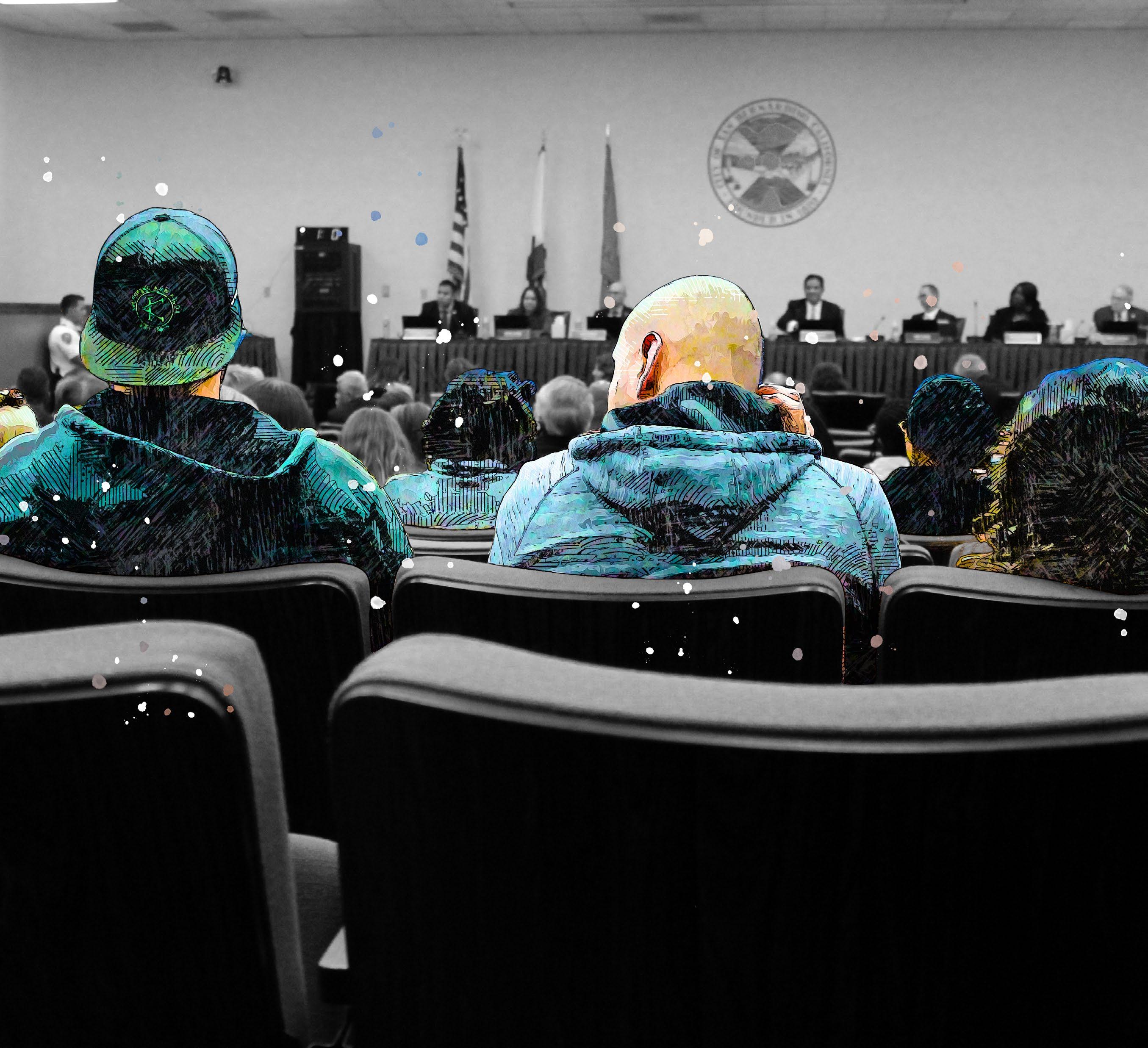

Throughout this report, we have specific policy and project recommendations based on the need for just economic systems in the City of San Bernardino. In addition, below are a set of recommendations around the process and practice of community engagement that should be adopted to foster greater inclusion among residents and community stakeholders. These processes mirror, the thoughtful engagement that contributed to this report and the many in which we intended to pursue in the city and county in the coming years
We believe that the lessons we have learned through the people’s plan community process here set a path for a robust and powerful community engagement process. We believe that the current level of community engagement in San Bernardino is reflected in who has benefitted from this situation. There are
We call on the city to establish equitable planning principles in its community engagement. Without engaging deeply with highly impacted communities the needs and priorities of the most vulnerable are unlikely to be taken into consideration. Processes like door to door surveys, online engagement and community events have proven to be much more effective than the traditional tools that the city uses to engage the community.
We call on the city to take on issues holistically rather than breaking them out by department. We know that issues of economic opportunity manifest in a variety of ways in our city, as this report details. Without talking about them collectively and with all related stakeholders and departments, these problems will not be adequately understood, let alone addressed.
Finally, we ask the city to partner with organizations like those in Just SB to ensure that there are trusted community partners engaging in outreach alongside the city. As trusted and skilled community partners, we can utilize cultural and class competency to gain trust with community members who may be reluctant to engage in a process run by the city. We hope to benefit the city and its administration through such partnerships in order to create a truly representative community engagement process.
We call on the city to create a more inclusive and broadly engaging process for the development of annual budgets. Most residents do not know that their input can be heard in the establishment of city priorities through the budgeting process. Without this broad community engagement we recreate the systemic inequities that give our city such a poor reputation and that recreate systemic poverty. We recommend engagement of youth through a partnership with city schools, especially for the development of the budget for parks and recreation and other programs that impact youth.. We also request a process for community engagement in city budgeting that is based in each ward of the city and that systematically engages neighborhood residents of the most underserved neighborhoods in the city with the highest levels of poverty.
When it comes to the arts, it is imperative that we make creative career pathways viable options for students. This should include access and support for all disciplines: media, performance, visual, craft and commodity production. Students can apply this skill-based learning to real jobs that are out there for young people right now. We should highlight the career opportunities in this field and promote local makers publicialy via city and county marketing to change the narrative of the region about the value of arts and culture in our education and civic development.
To improve our current education system, the community has asked for more resources to be allocated at the K-12 level to support specialized programs and hire more proactive academic counselors. These specialized programs and counselors should also provide information on alternative paths such as vocational training and trade schools.
Solutions to our community’s environmental justice problems start with the creation of highly organized community members and political advocates with an ability to make policy changes and financial decisions where the people are put over profit. This requires community members to be involved in creating legislation directly related to their basic needs. Elected officials must oppose the criminalization of the homeless, freely share beneficial policies, and no longer refuse to seek existing public funds to relieve every symptom of our housing crisis.
See page #67
The community has asked for paid work that helps returning community members establish economic stability after their release. This reduces recidivism, promoting greater public safety and a strong regional economy. Government institutions and employers must take steps to give returning citizens a fighting chance for an advantageous re-entry into their communities.
See page #94
The city is poised to become a leader in creating quality, sustainable jobs despite logistics being a large component of the region’s overall economic infrastructure. The people are concerned with the lack of opportunities for skills development, apprenticeships and the availability of sustainable jobs offering living wages. It’s essential that the city invest in innovative, pro-worker practices that move industries in a more sustainable and environmentally responsible direction and create thriving communities.
See page #102
Warehouse jobs have not proven to offer living wages, nor be sustainable for the community. The theme of quality jobs and economic opportunity is at the heart of San Bernardino’s grassroots plan. City management has repeatedly overlooked the needs of residents of San Bernardino. Our economy requires an overhaul to rebuild a better economy via: comprehensive community based planning, employment access, diversified economic development strategies, high road training and employment programs, entrepreneurship and job opportunities
See page #116
For our youth, it’s necessary to thoroughly prepare our communities for better job and career opportunities, via career development training, coaching and paid work experience. Youth and young adults should not be the main breadwinner for their families, or working more than one job to survive or relocate for better working conditions, wages, or access to quality education. We must invest in ways to enable youth to discover their passions and develop marketable skills for the future.
See page #130

1. “Creative Economy Revitalization Act.” Put Creative Workers to Work, 3 Mar. 2022, https://www.creativeworkers.net/creative-economy-revitalization-act.
2. “The Value of the Arts for San Bernardino County,” May 4, 2021. Authors Joshua Craig, Concepcion Rodriguez, supervised by Janet Kottke, Ph.D Cal State San Bernardino.)
3. De Lara, Juan. Inland Shift: Race, Space, and Capital in Southern California. University of California Press, 2018.
4. The People’s Collective for Environmental Justice. “Warehouse, Pollution, and Social Disparities.” April, 2021.
5. Sowinski, Lara. “What Businesses Need to Know About WestCoast Logistics.” 2007.
6. Torres, Ivette. “Warehouses, Pollution, and Social Disparities.” Earthjustice, 26 Apr. 2021, https://earthjustice.org/blog/2021-april/warehouses-pollutionand-social-disparities#:~:text=The%20report%20also%20demonstrates%20 that,constructed%20in%20already%20pollution%2Dburdened.
7. Lofstrom, Magnus, and Brandon Martin. “California’s County Jails.” Public Policy Institute of California, Public Policy Institute of California, 26 Oct. 2021, https:// www.ppic.org/publication/californias-county-jails/.
8. San Bernardino County, CA Jail and Prison System. StateCourts. (n.d.). Retrieved April 12, 2022, from https://www.statecourts.org/inmate-search/california/sanbernardino-county/
9. Californians United for a Responsible Budget. (n.d.). THE PEOPLE’S PLAN FOR PRISON CLOSURE. Retrieved April 12, 2022, from https://www.curbprisonspending. org/wp-content/uploads/2021/04/Peoples-Plan-for-Prison-Closure.pdf
10. Couloute, L., & Kopf, D. (n.d.). Out of Prison & Out of Work: Unemployment among formerly incarcerated people. Out of Prison & Out of Work | Prison Policy Initiative. Retrieved April 12, 2022, from https://www.prisonpolicy.org/reports/outofwork.htm
Aldo Ramirez
Alenny Cadag
Alex Avila
Alicia Aguayo
Anthony Jerry Anthony Victoria
Bennie Tinson
Brenda Huerta
Carolina Sanchez
Celene Perez
Celia Cudiamat
Chazzney Russel
Christian Flores
Chyna Davis
Dar’rell Jones
Devona Robertson
Diane Podolske
Dina Walker
Felicia Jones
Grecia Perez
Jean Kayano
Jennifer Kane
Jessica Kaczmarek
Jewel Patterson
Jorge Heredia
Joslyn Santana
Kassandra Cisneros
Kim Carter
Lanae Norwood
Leticia Herrera
Lyzzeth Mendoza
Mariela Trujillo
Mark Agers
Michael Segura
Michelle Decker
Mike Chavez
Mirella Deniz-Zaragoza
Nicole Pritchard
Olga Flores
Rakayla Simpson
Rev Samuel Casey
Sheheryar Kaoosji
Sonya Gray-Hunn
Tom Dolan
Tremaine Mitchell
Vanessa Perez
Yasmeen Dabbas
Photos by: Wiskr Shoots
Fabian Torres
photo pg. #’s
4, 31, 45, 61, 77, 85, 91, 109


Freddy Calderon
social media: @wiskrshoots wiskrshoots@gmail.com social media: @a.westside.story outthesixth@gmail.com
photo pg. #’s
covers, table of contents, 1, 7, 9, 21, 23, 36, 41, 43, 68, 72, 75, 79, 80, 87, 94, 100, 105, 112-113, 116, 117, 120-21, 126, 129, 132, 139
Data from survey: justsb.link/data justsb.link/dictionary



The People’s Plan for Economic Inclusion is intended to be a roadmap for economic policies and projects to develop local, grassroots-based solutions focused on job creation that is sustainable and community-owned. We intend to create innovative models and strategies for economic growth in the City of San Bernardino; and offer participatory models for inclusive community engagement that put people first.
Contact the Just SB Collaborative Website: www.justsb.org Instagram/Facebook: @ justsanbernardino Email: Justsb2020@gmail.com
learn more about the terms used in this report
